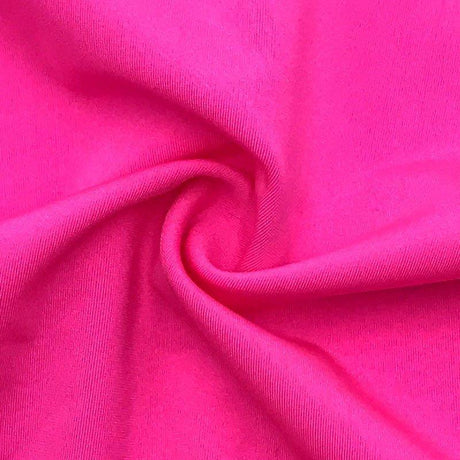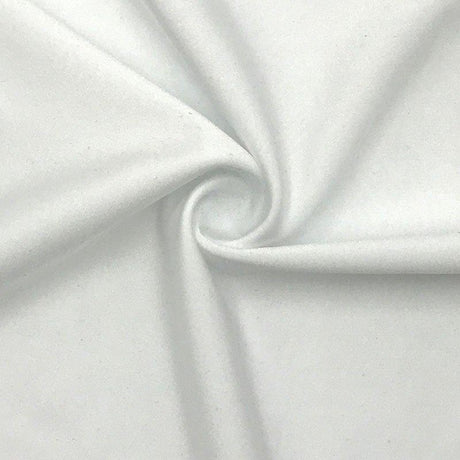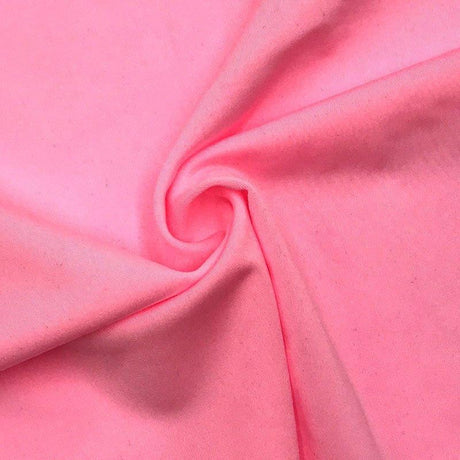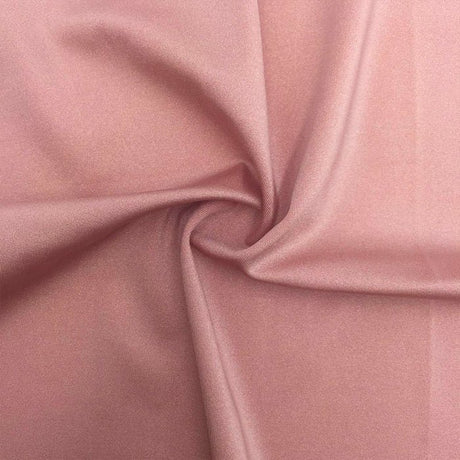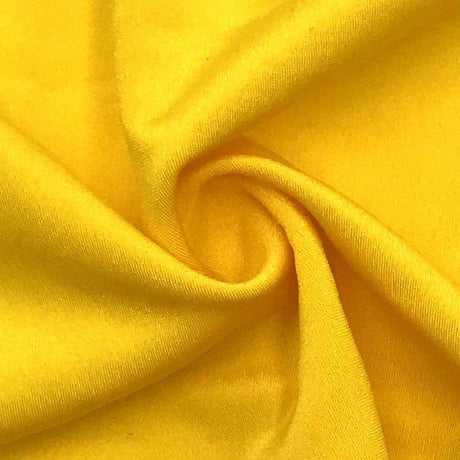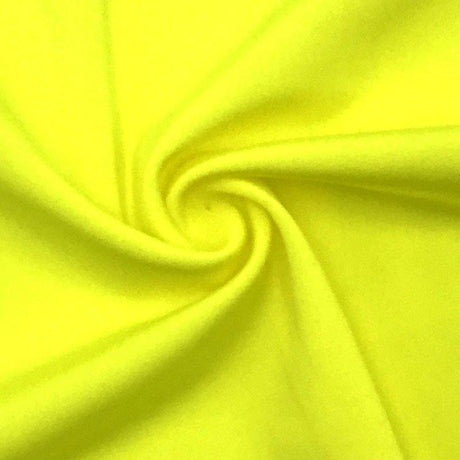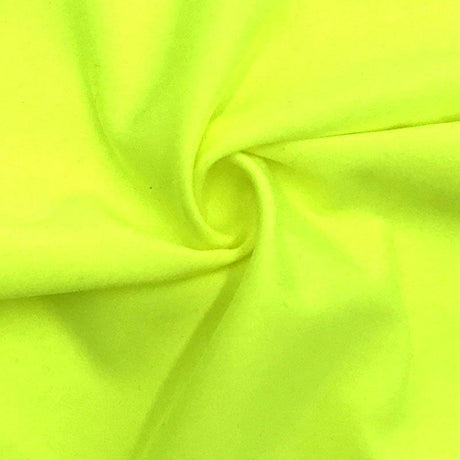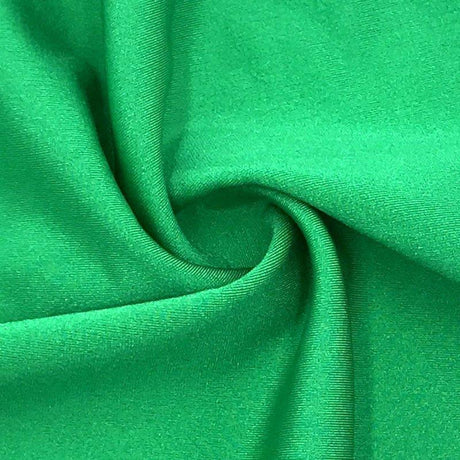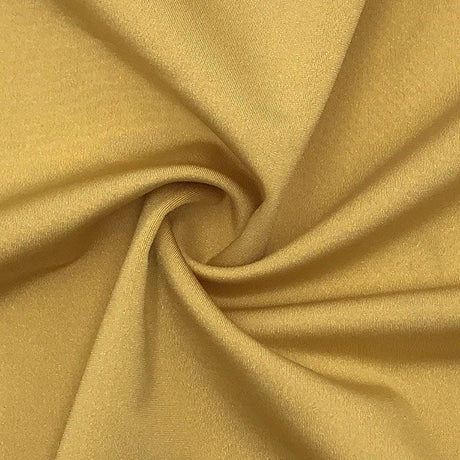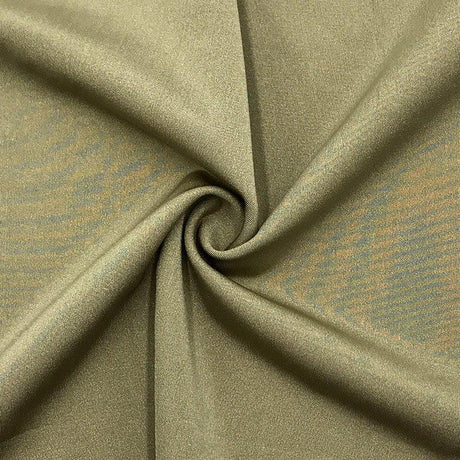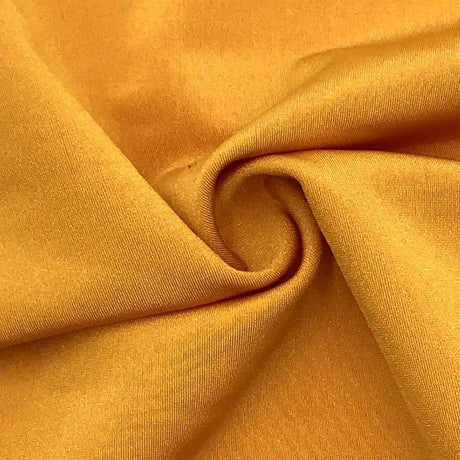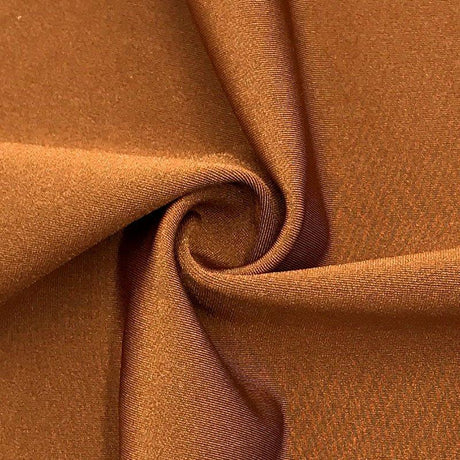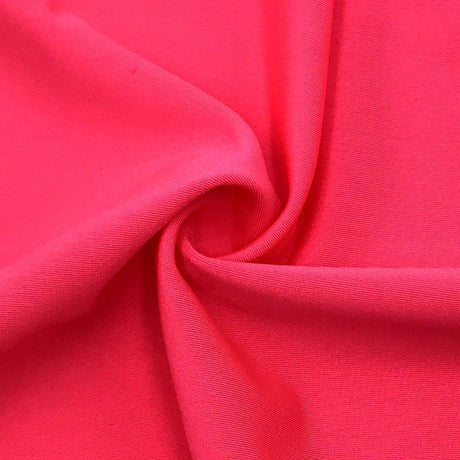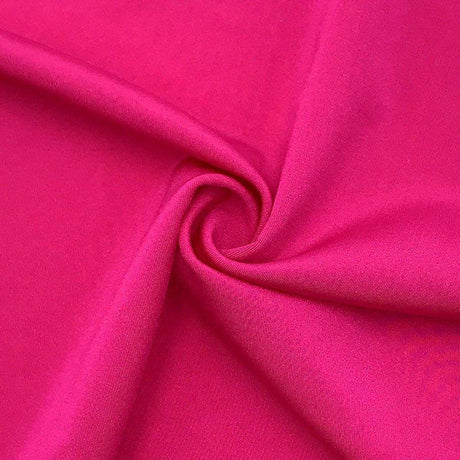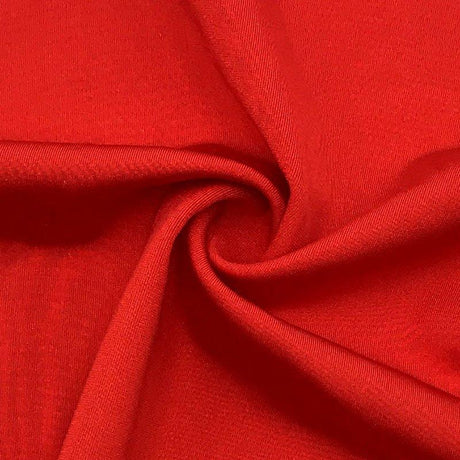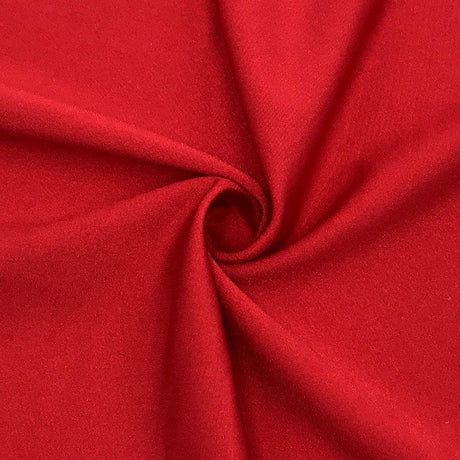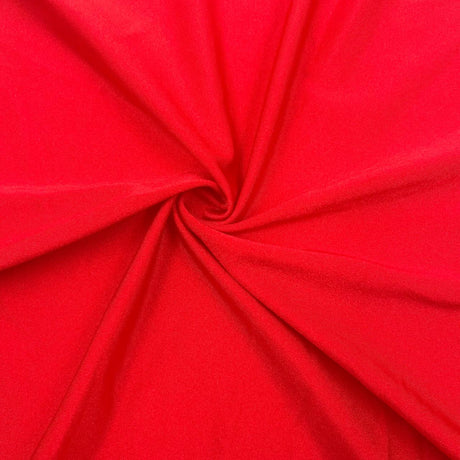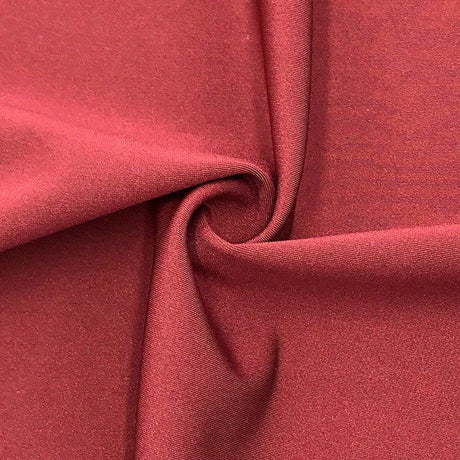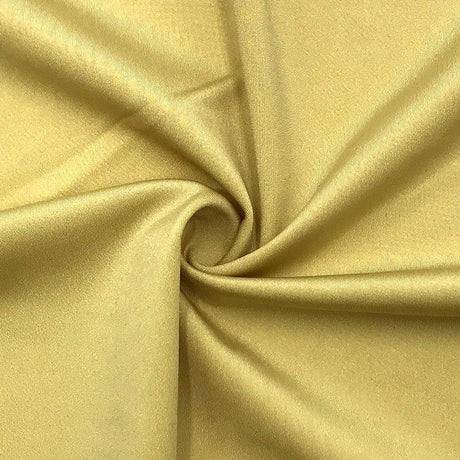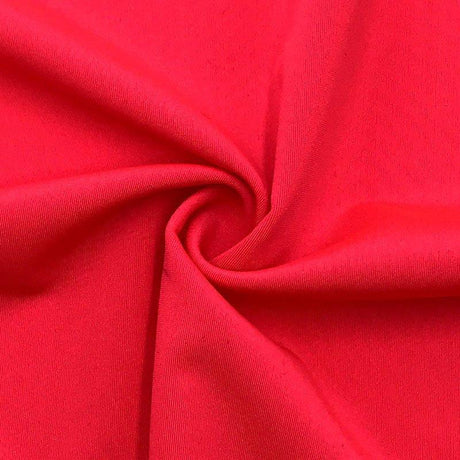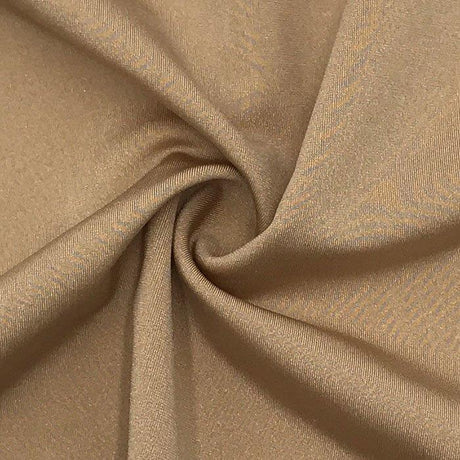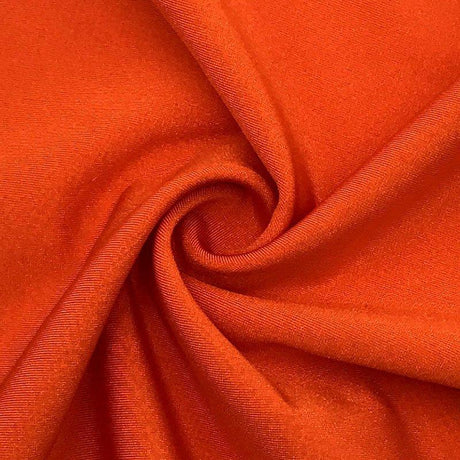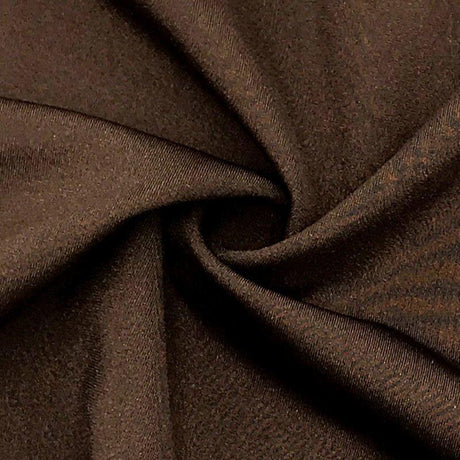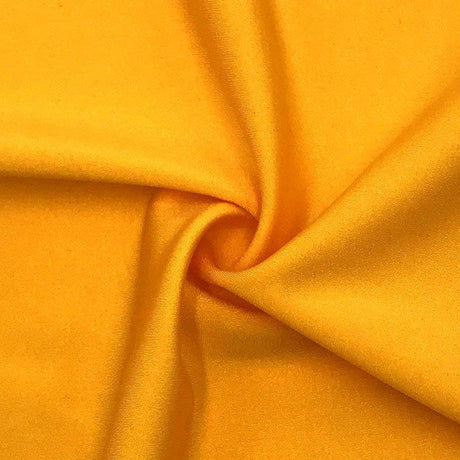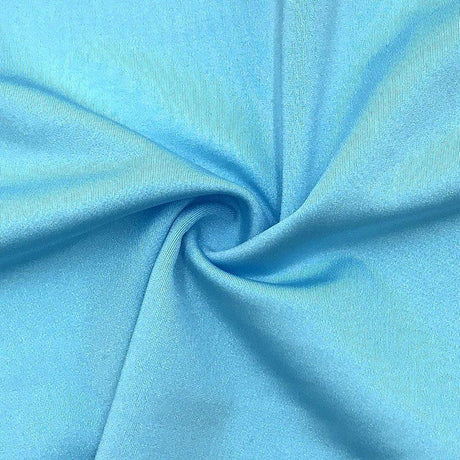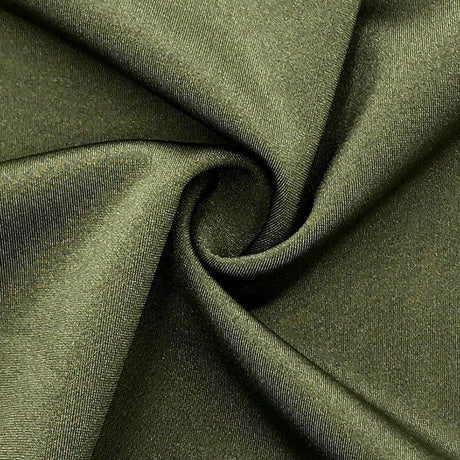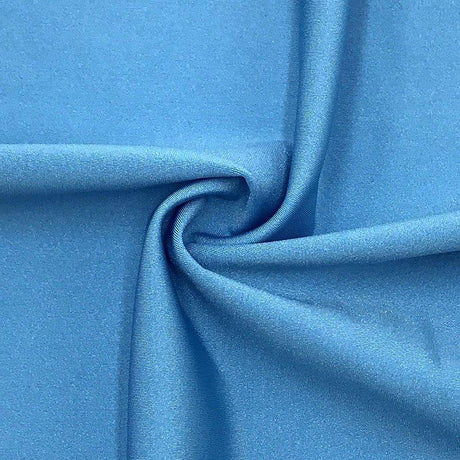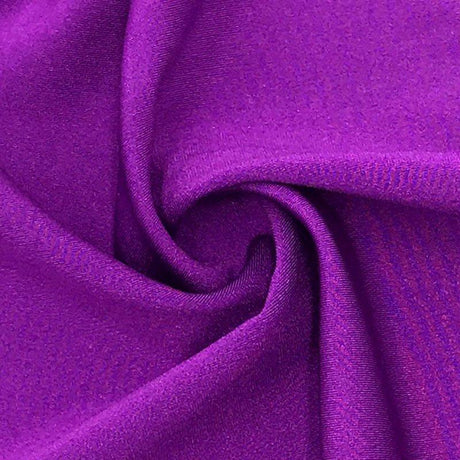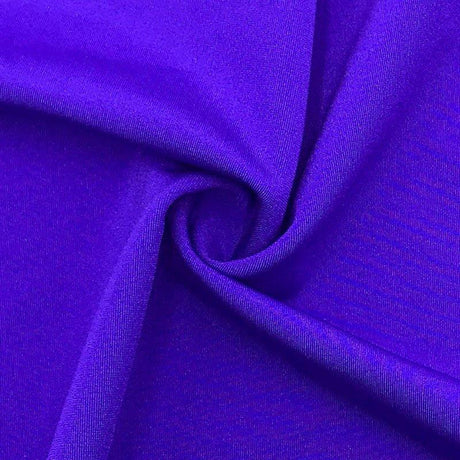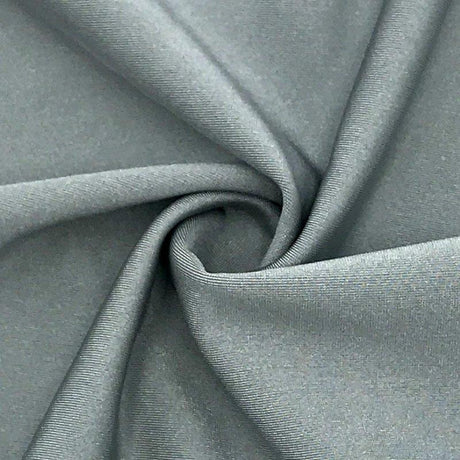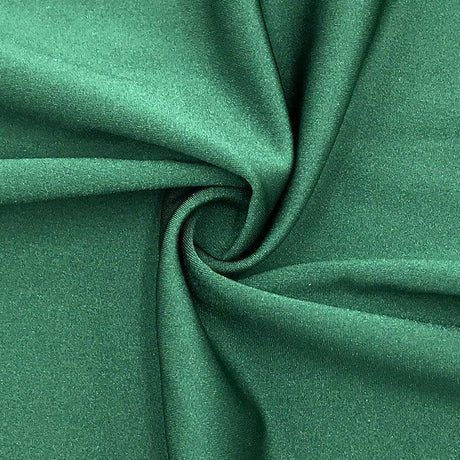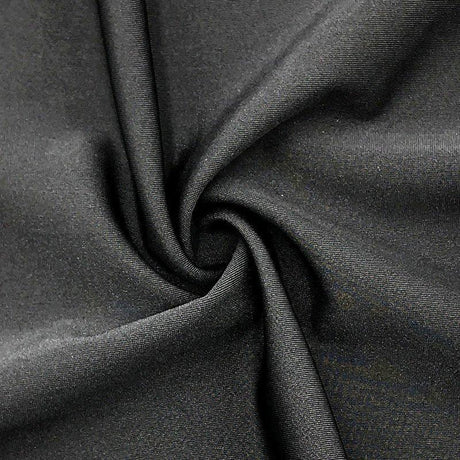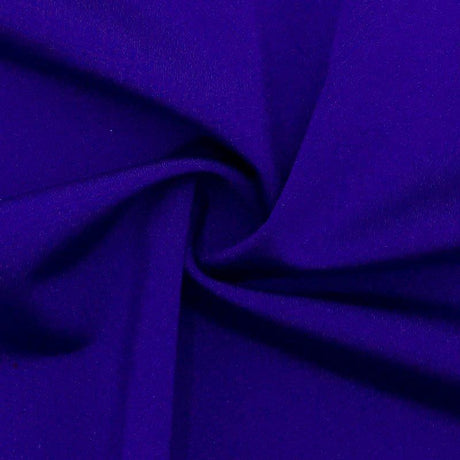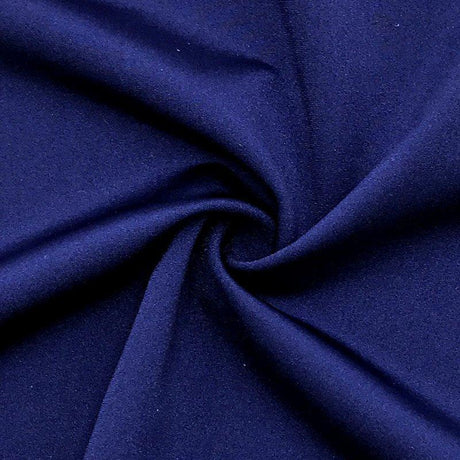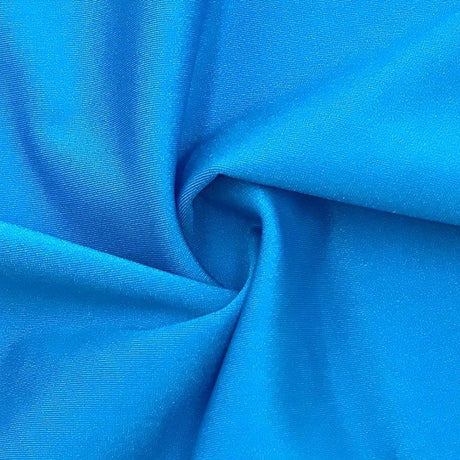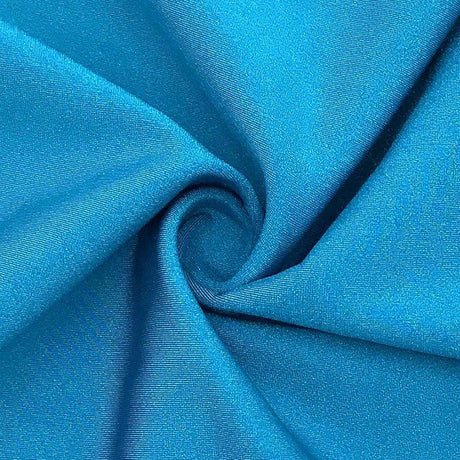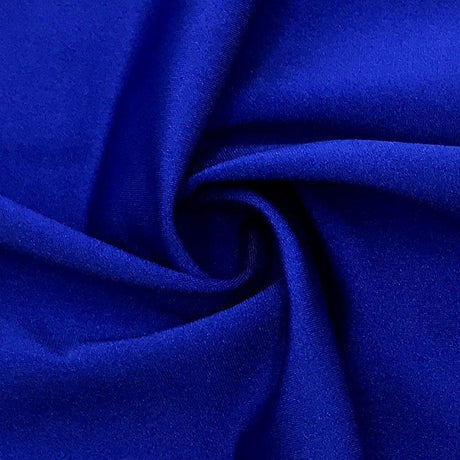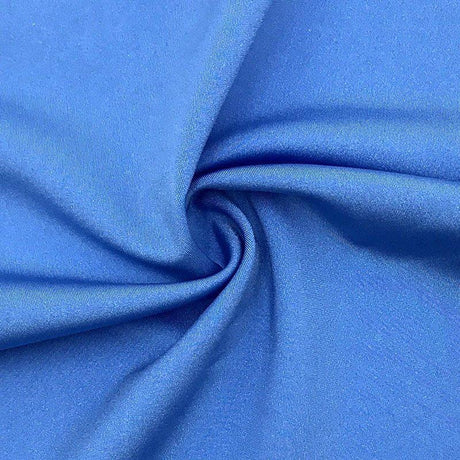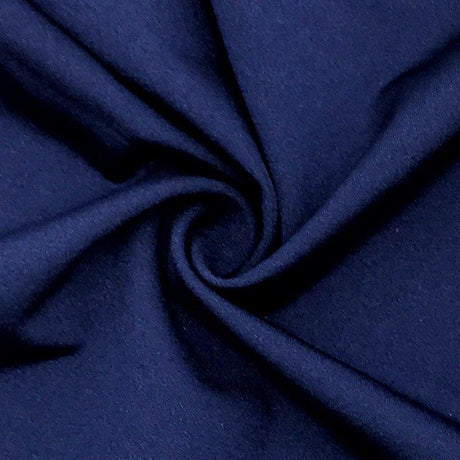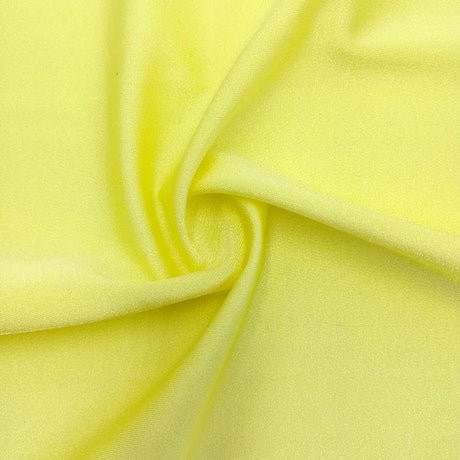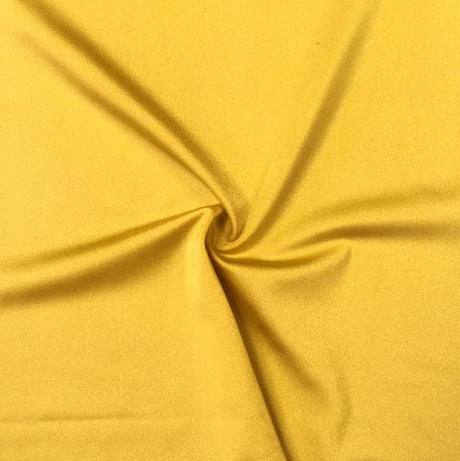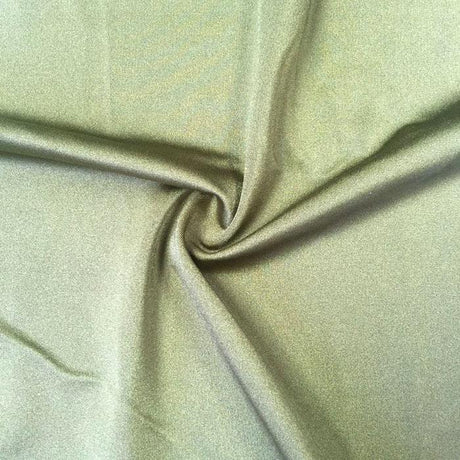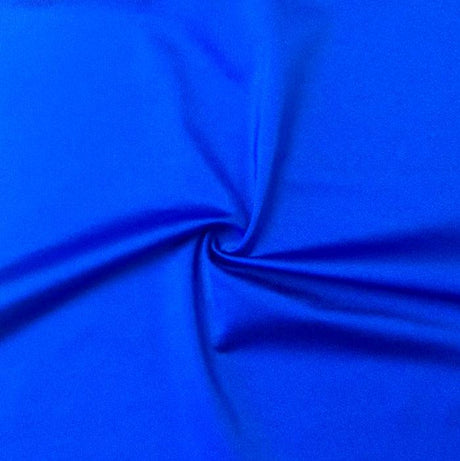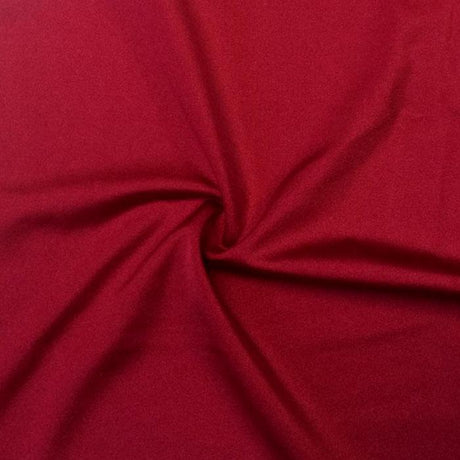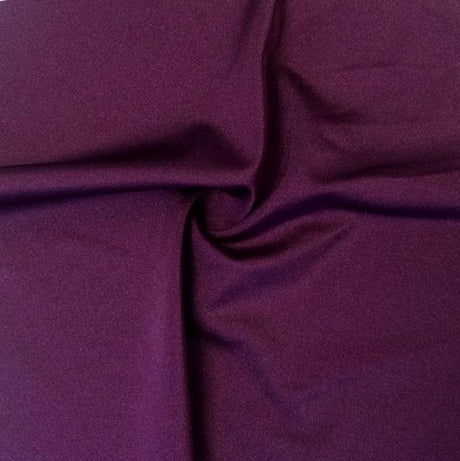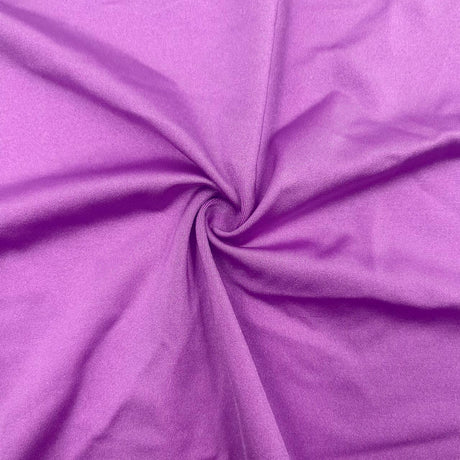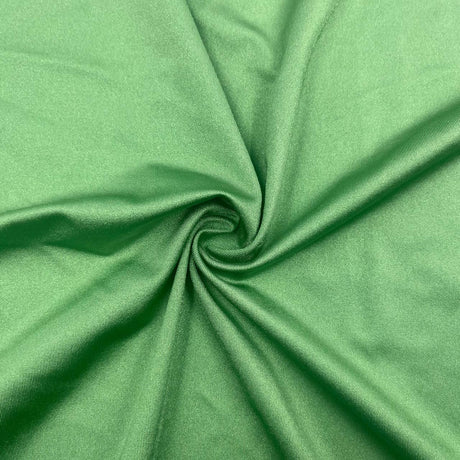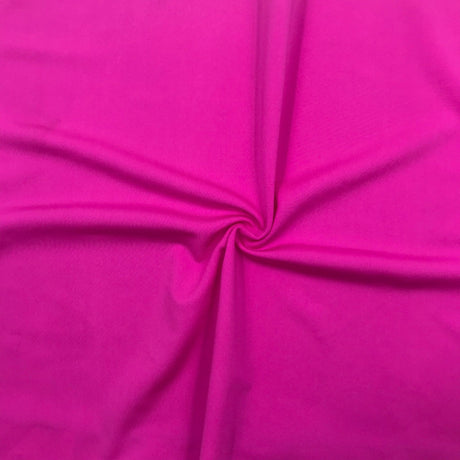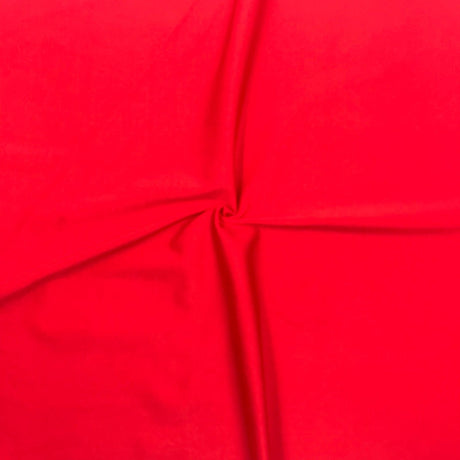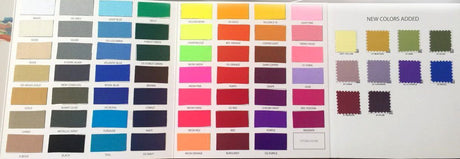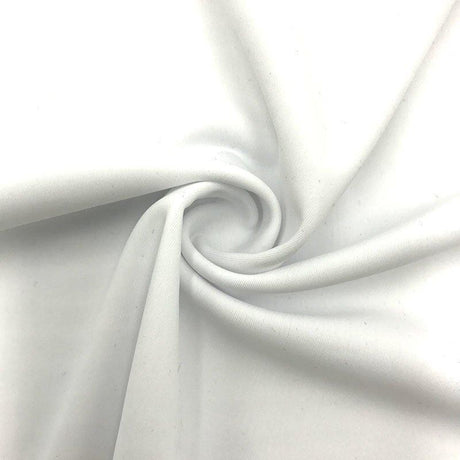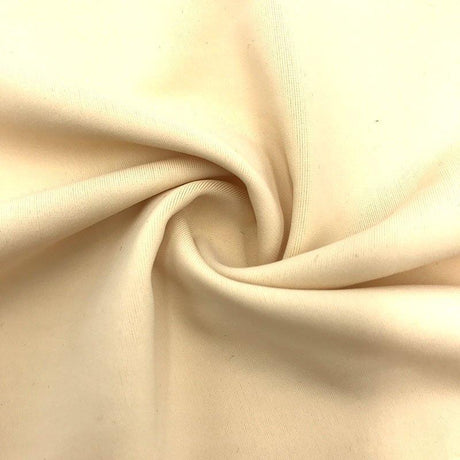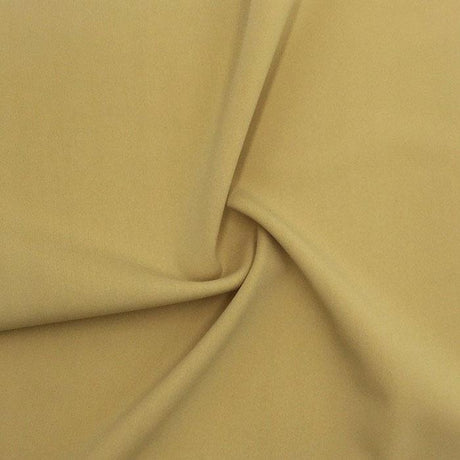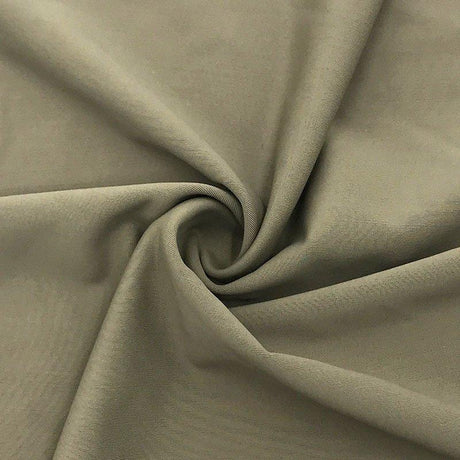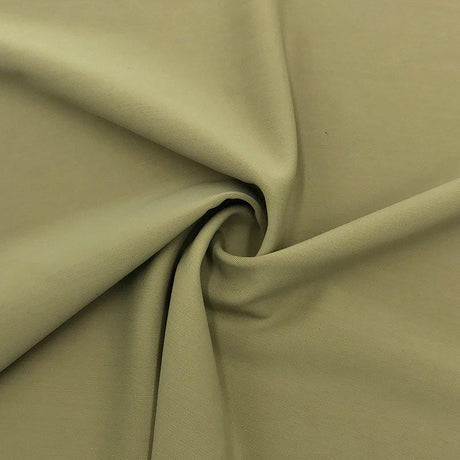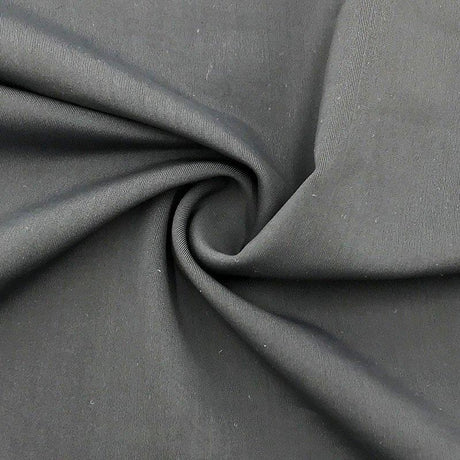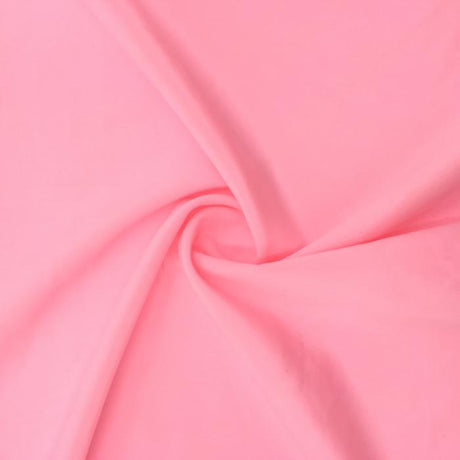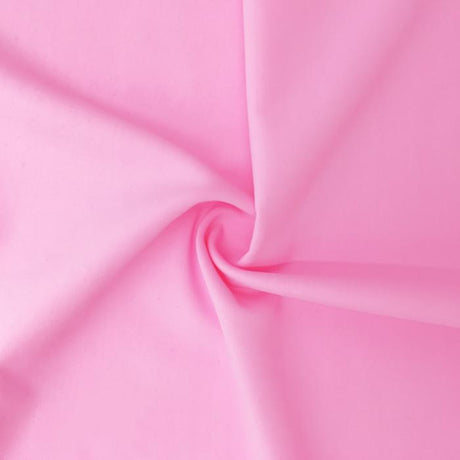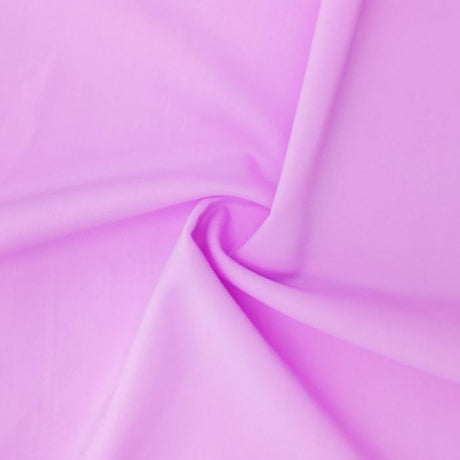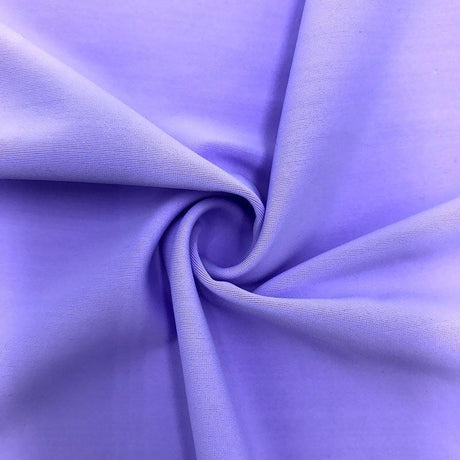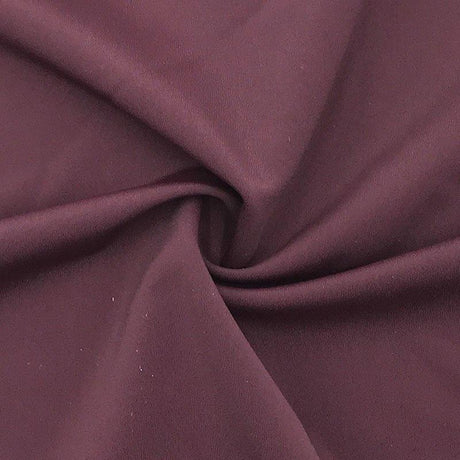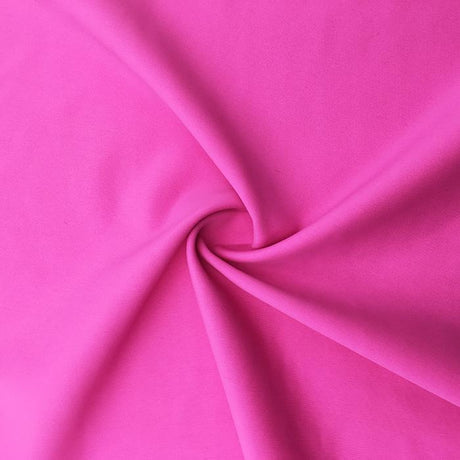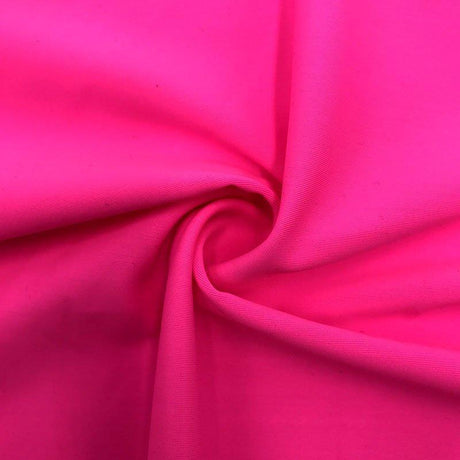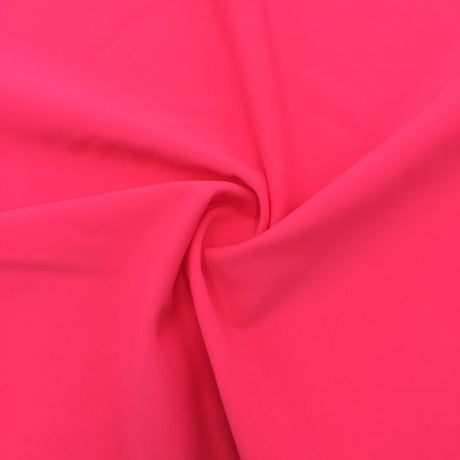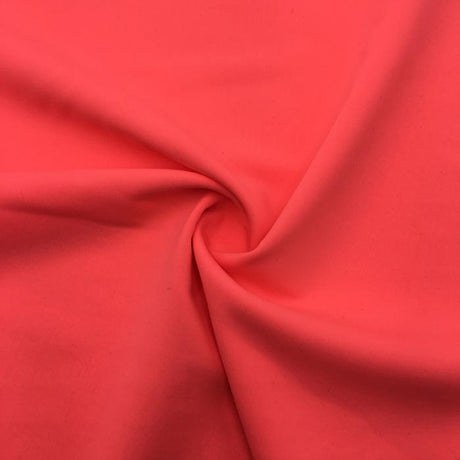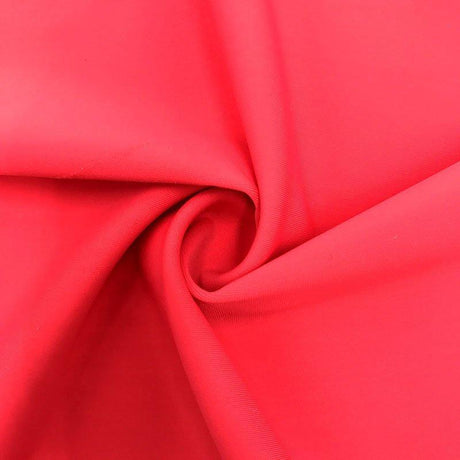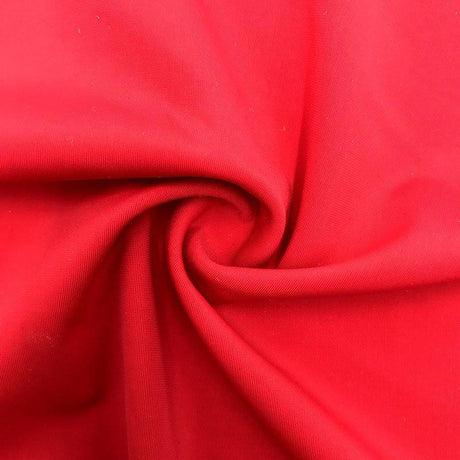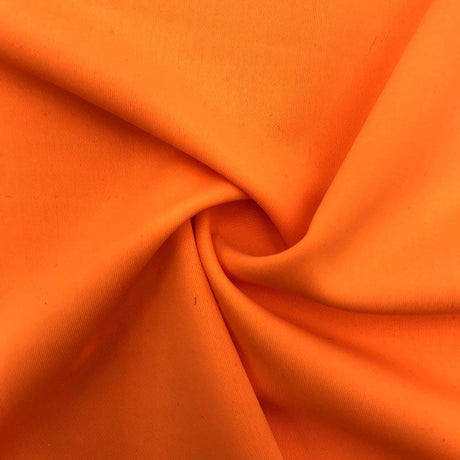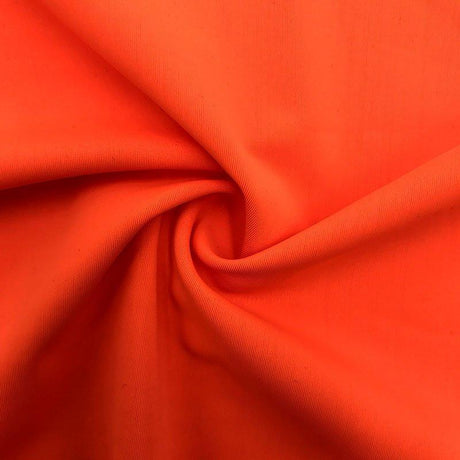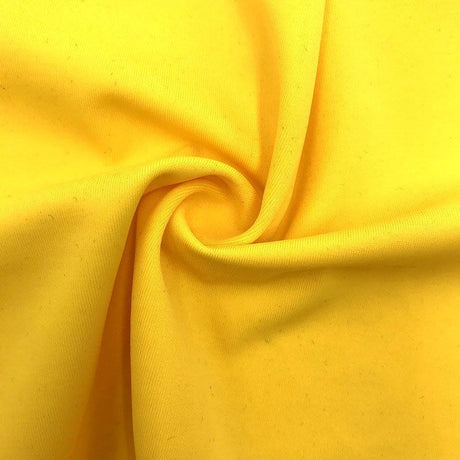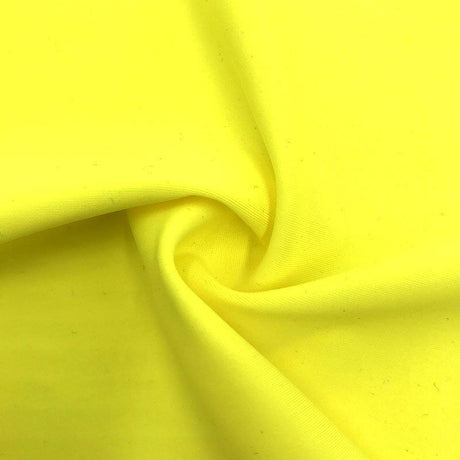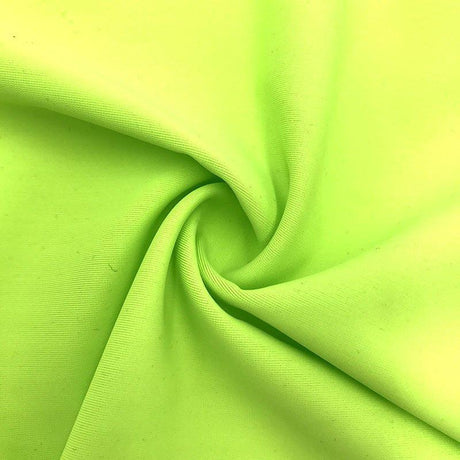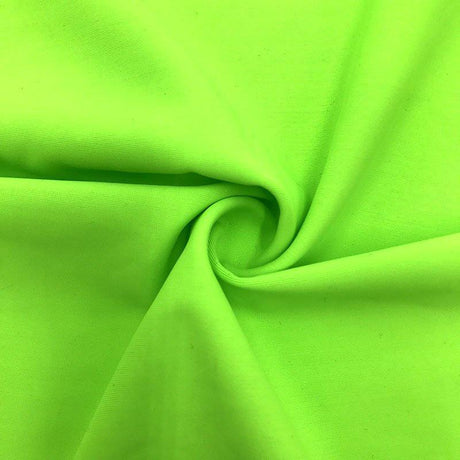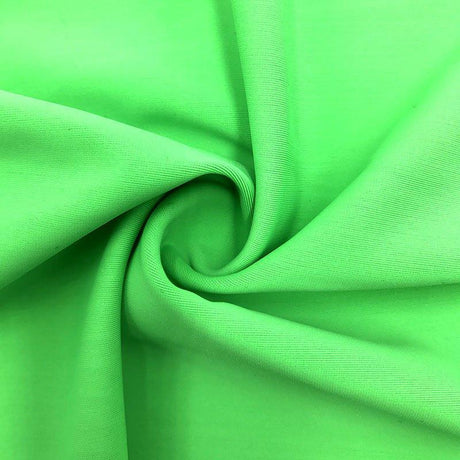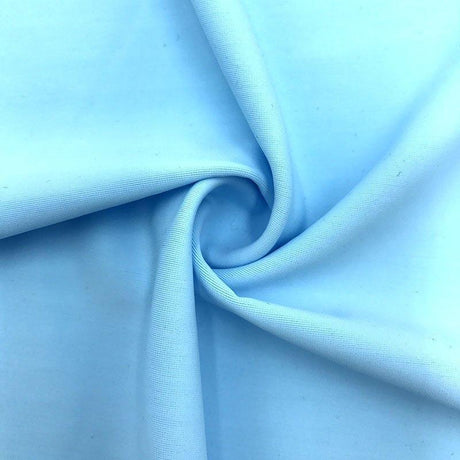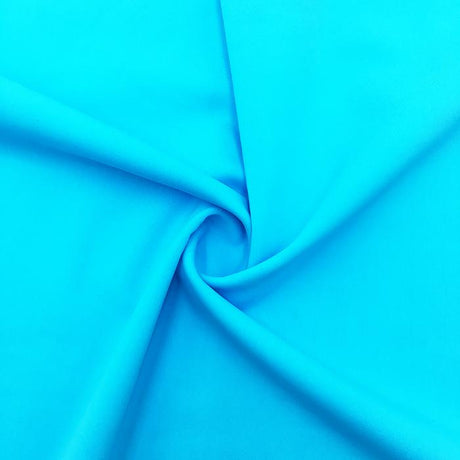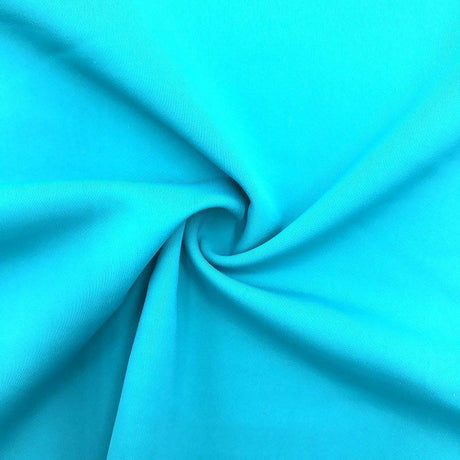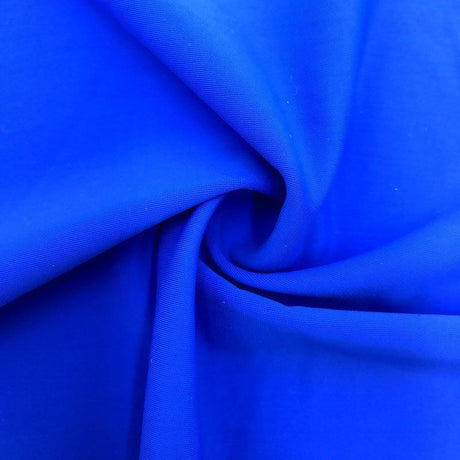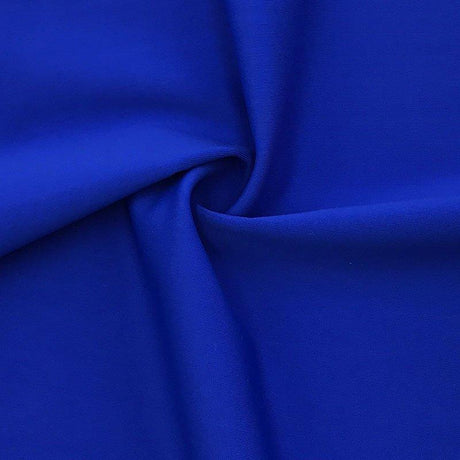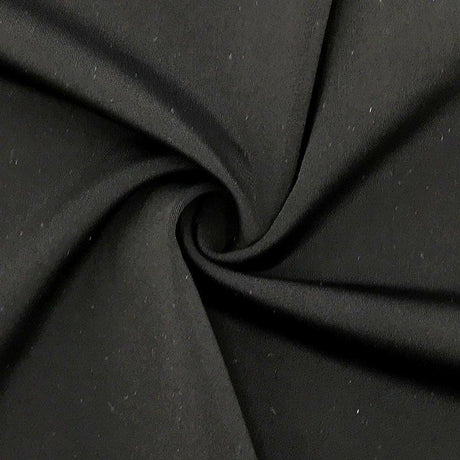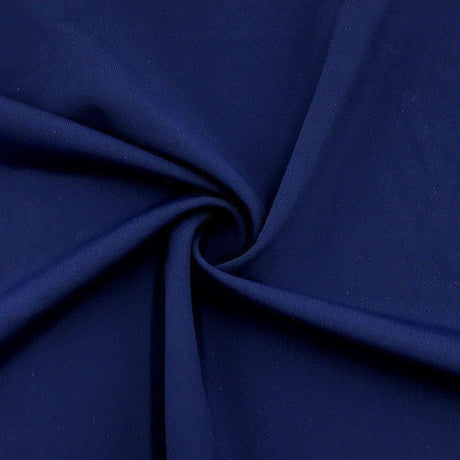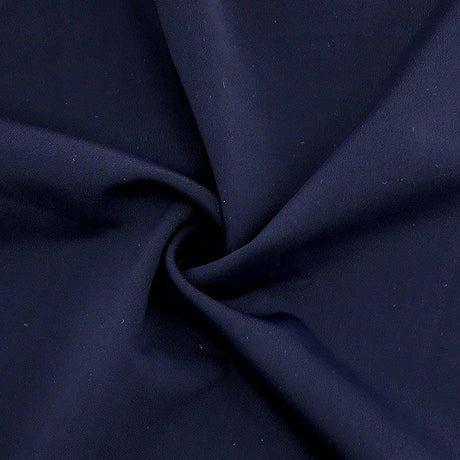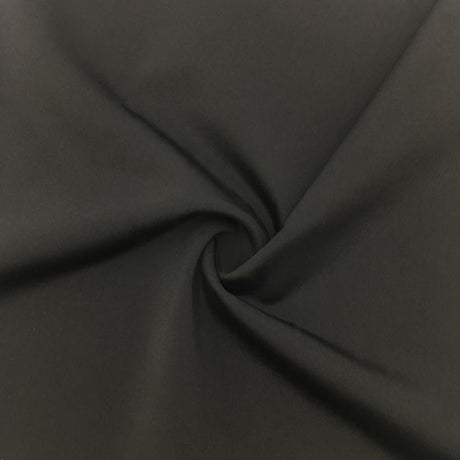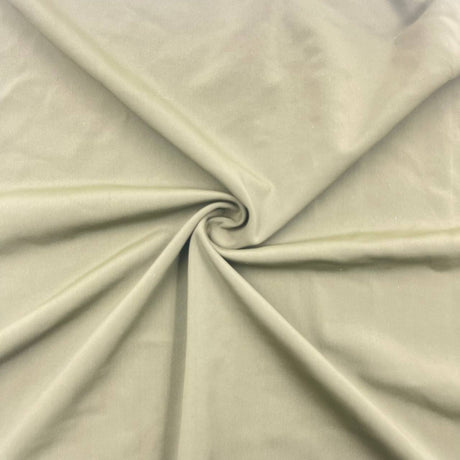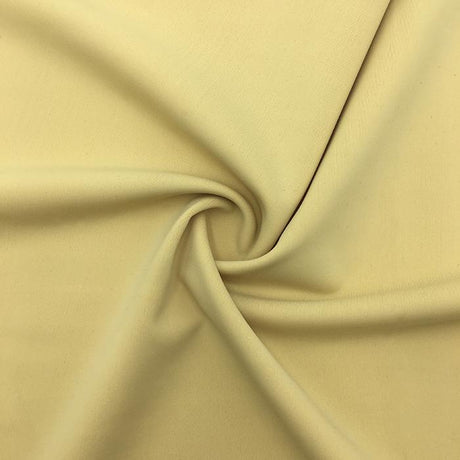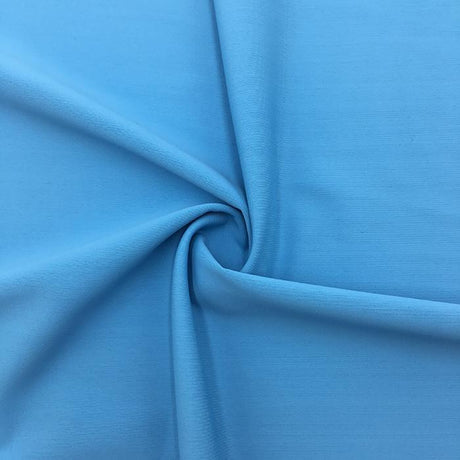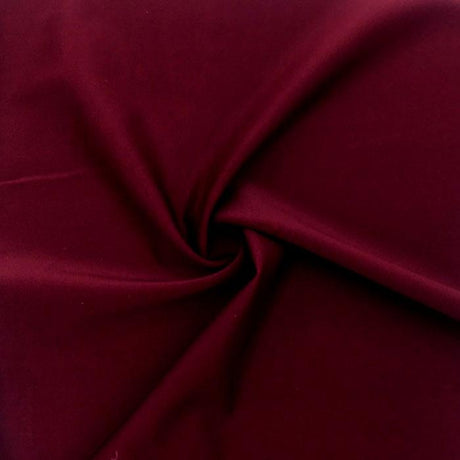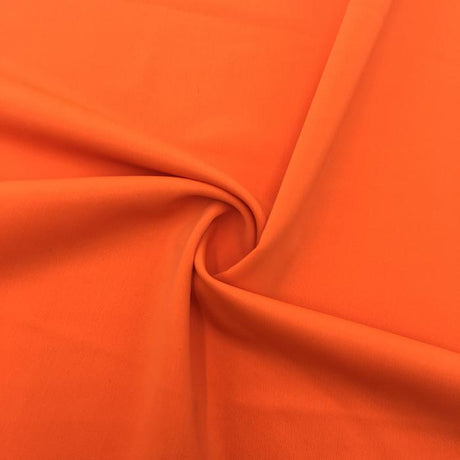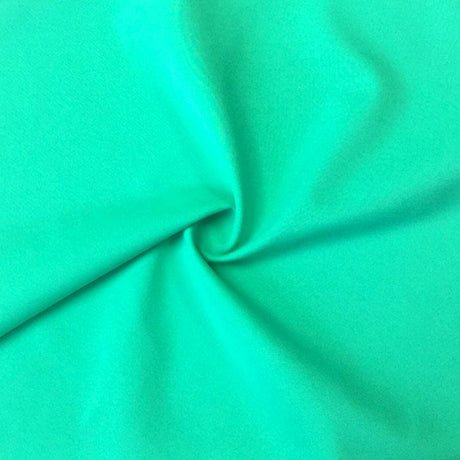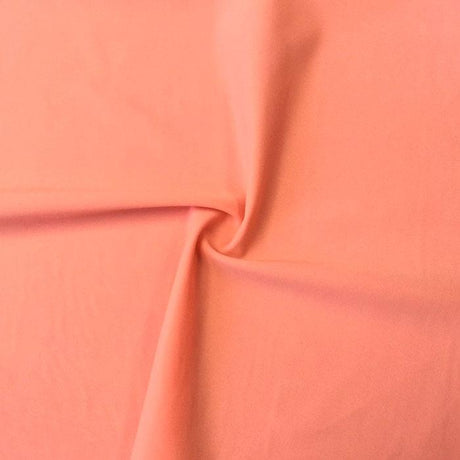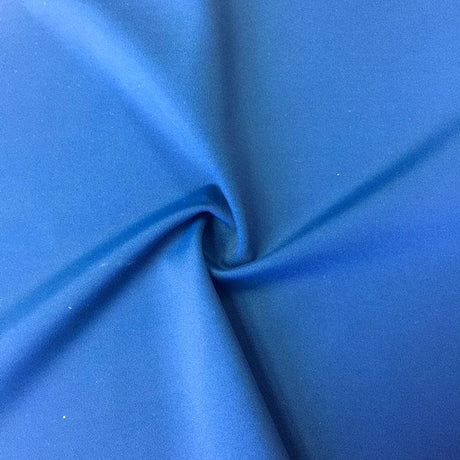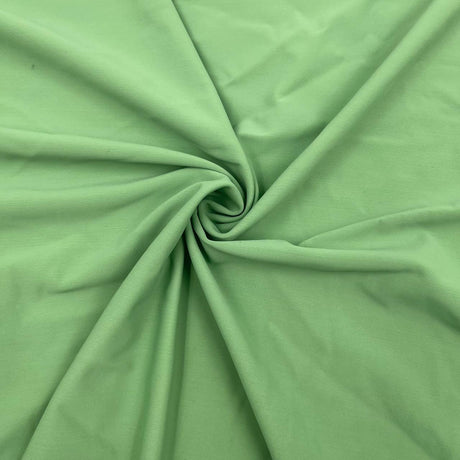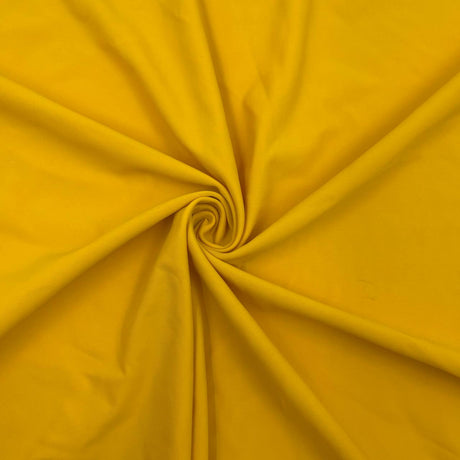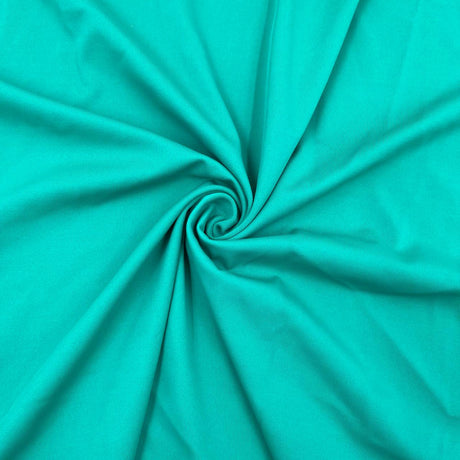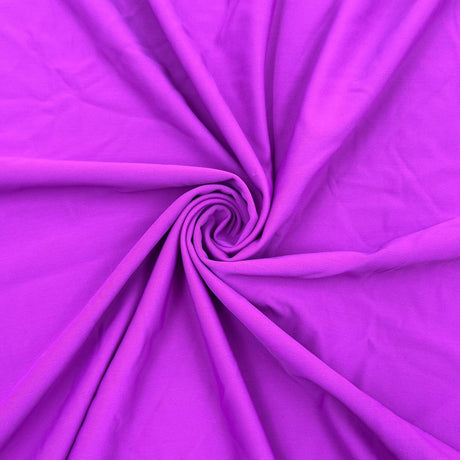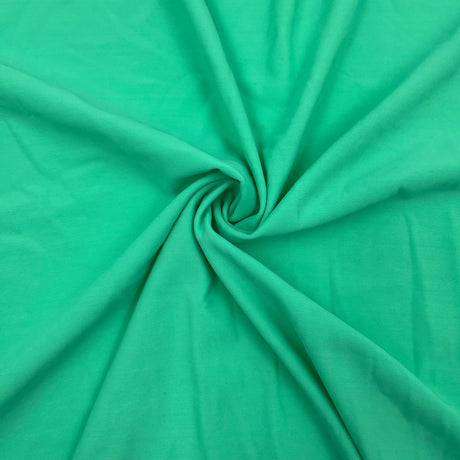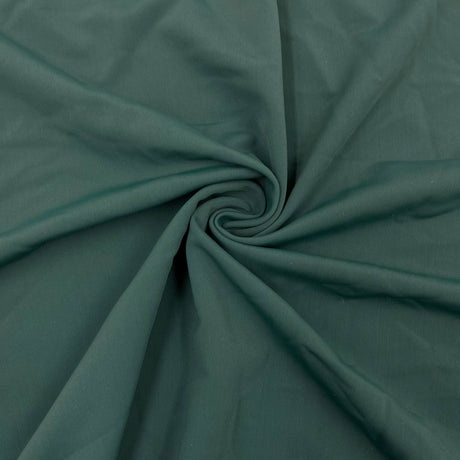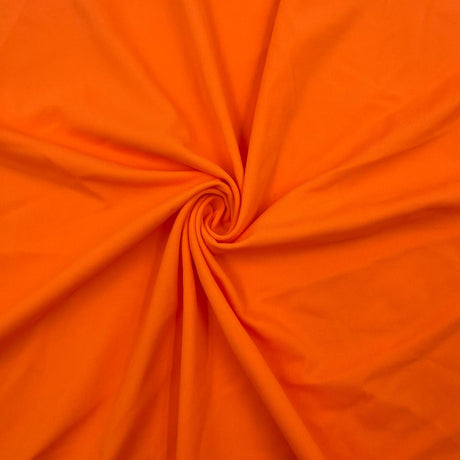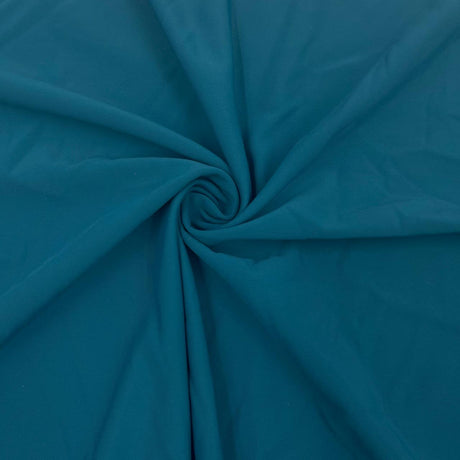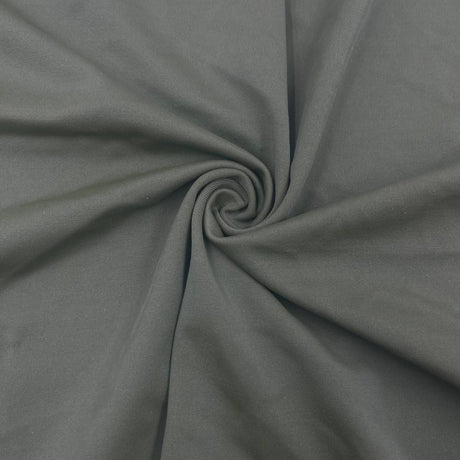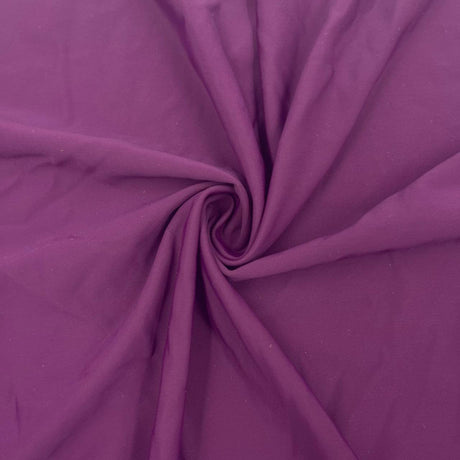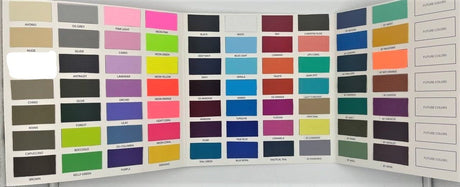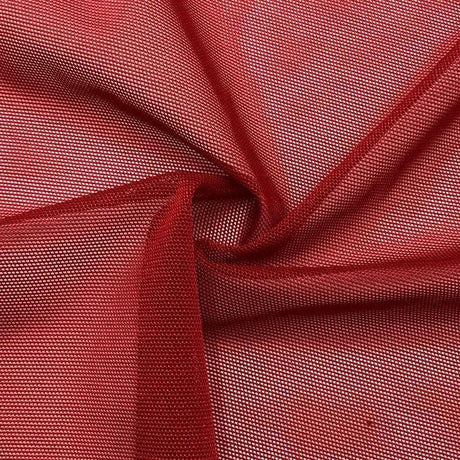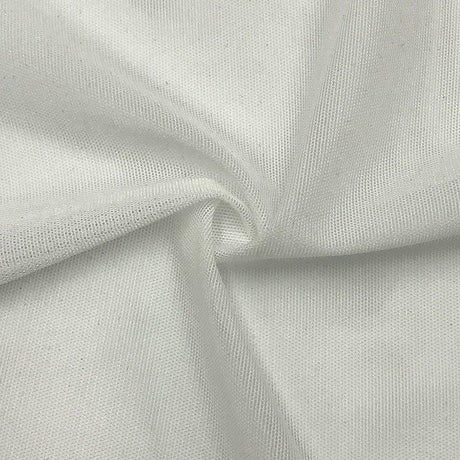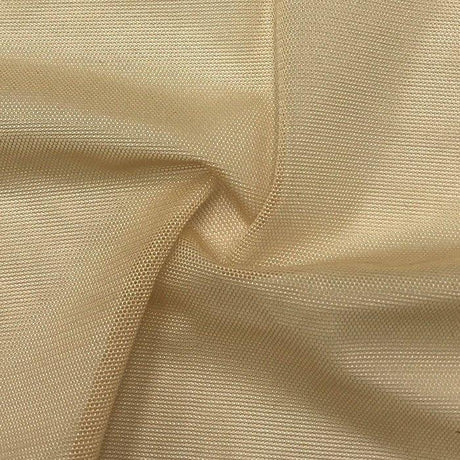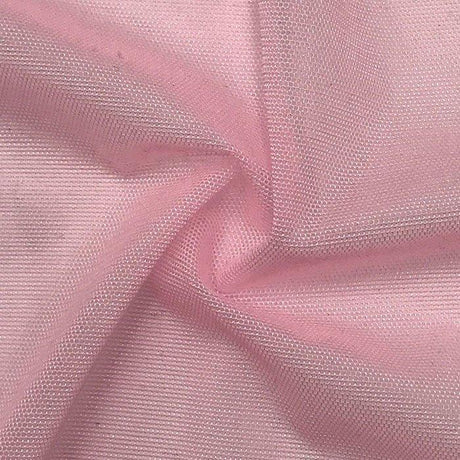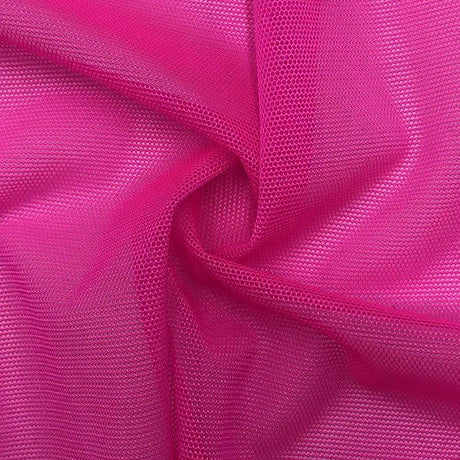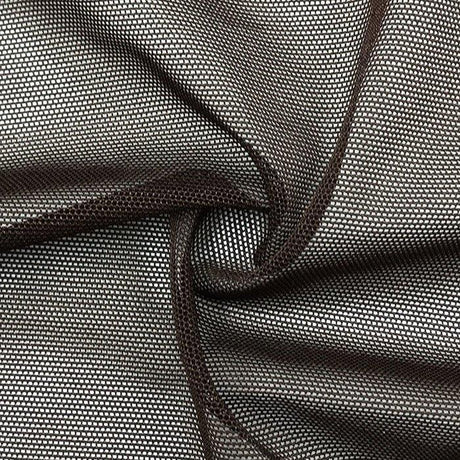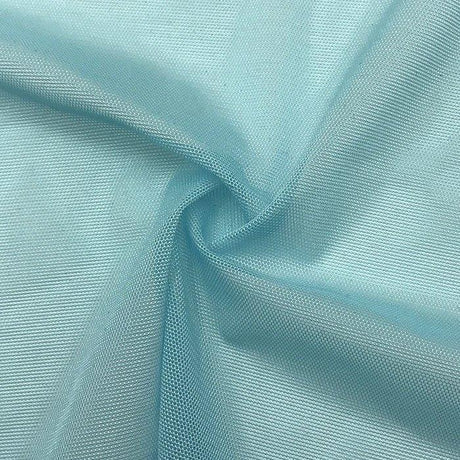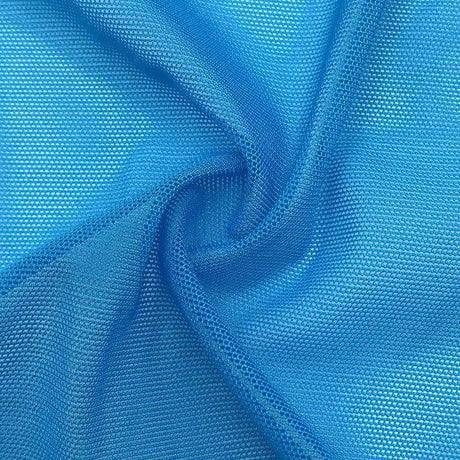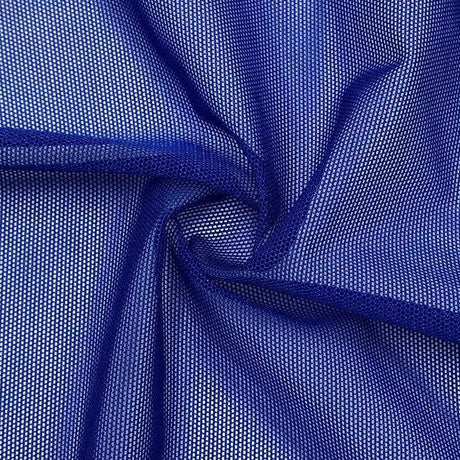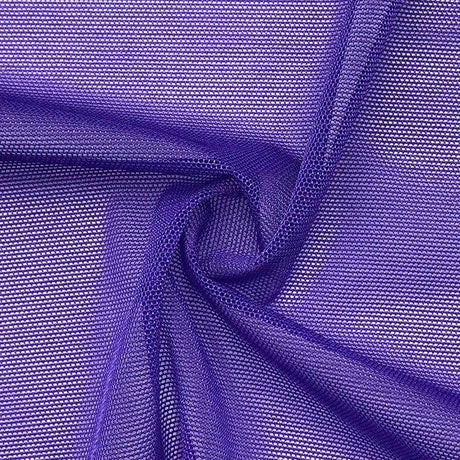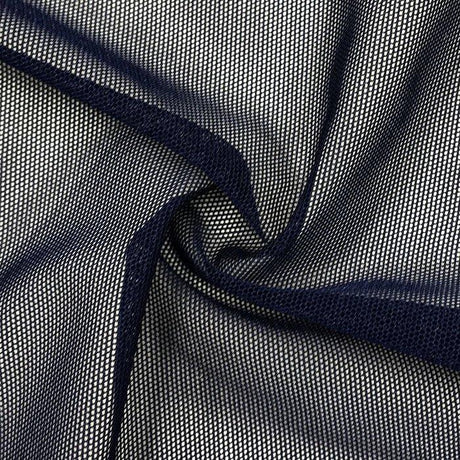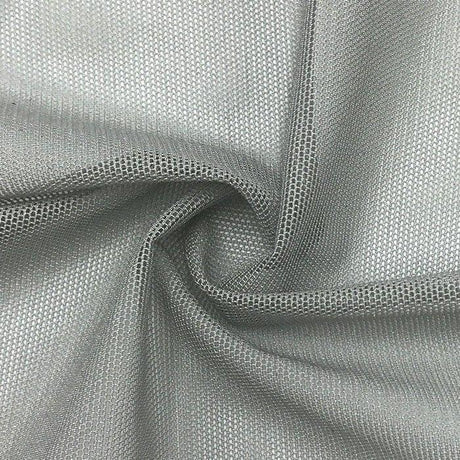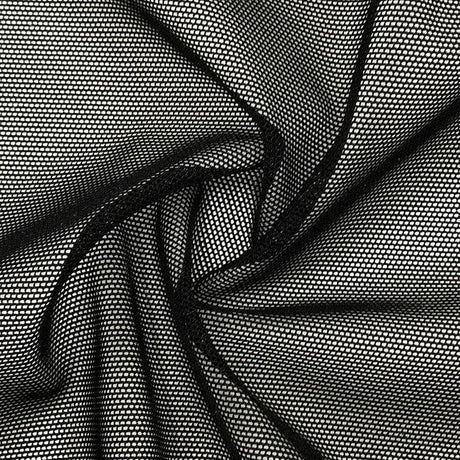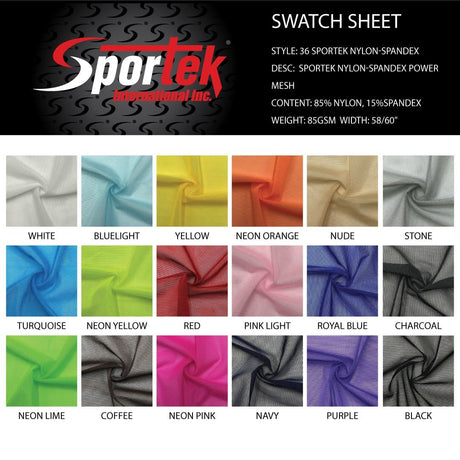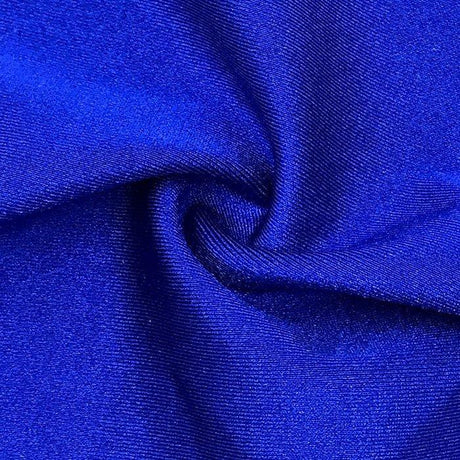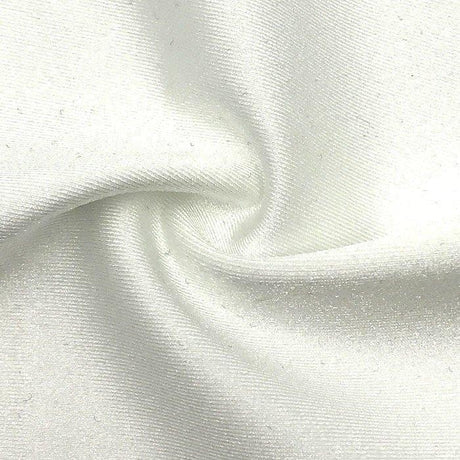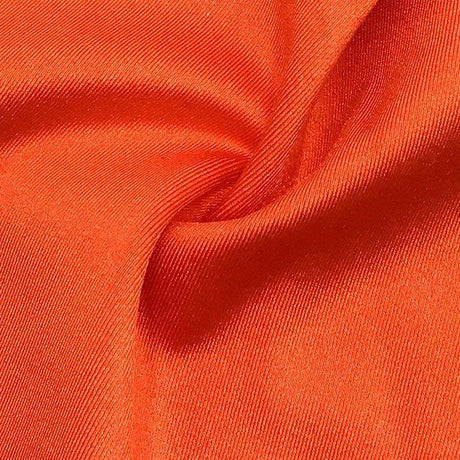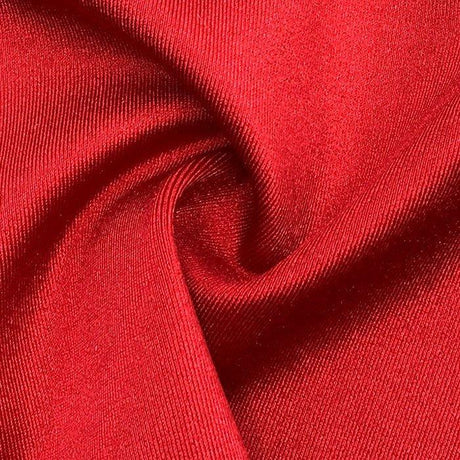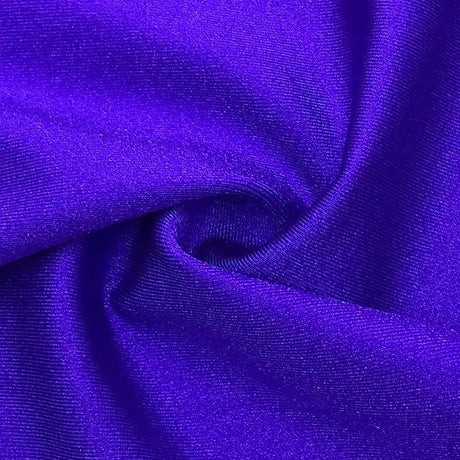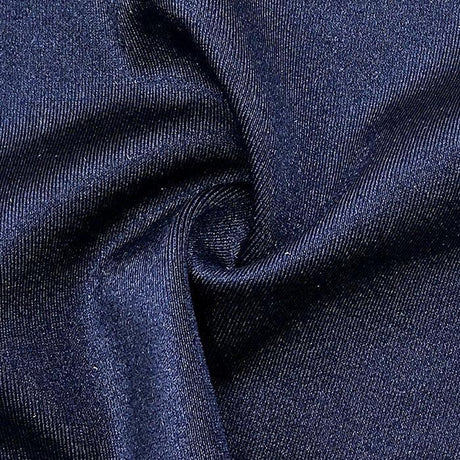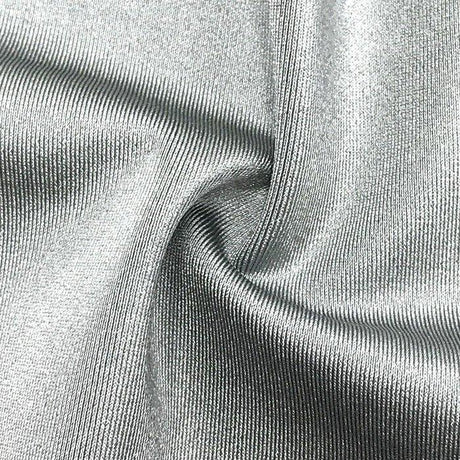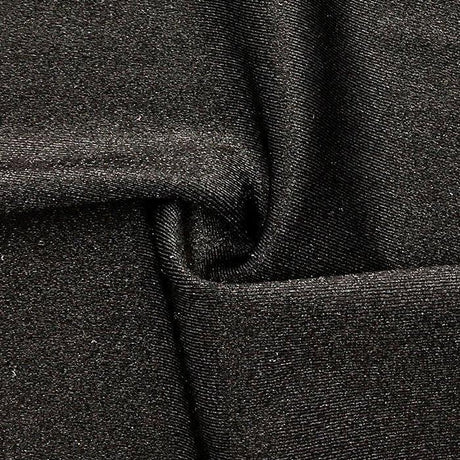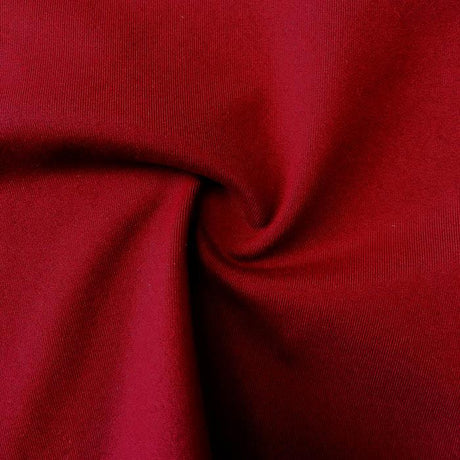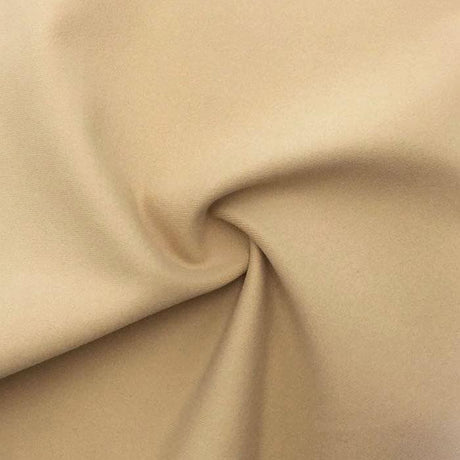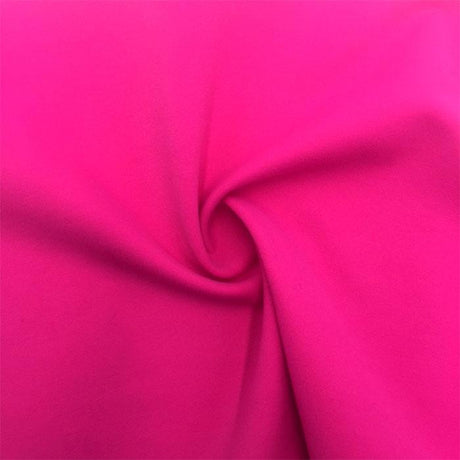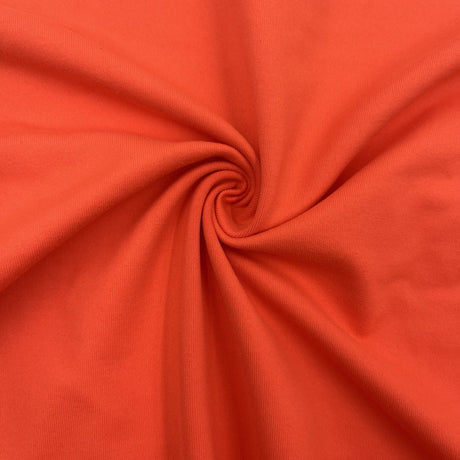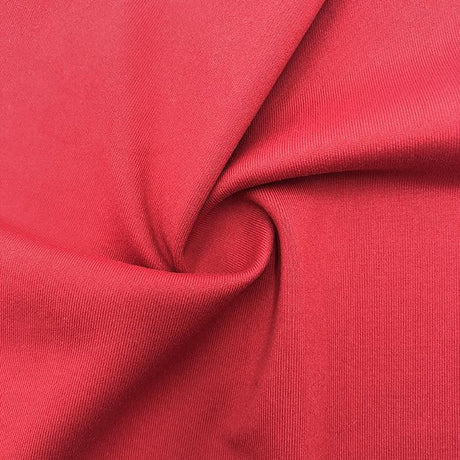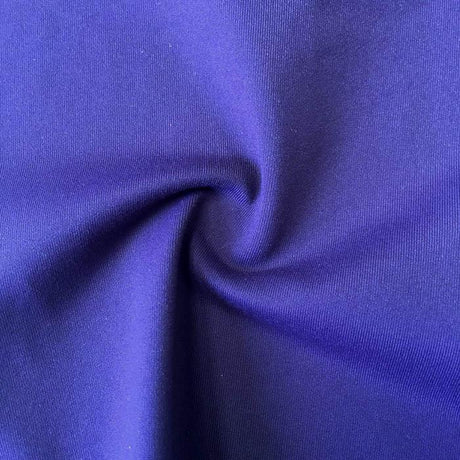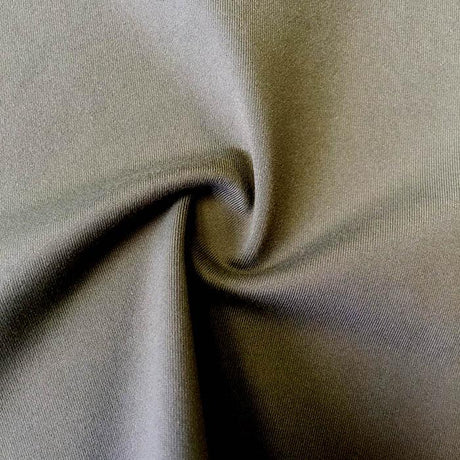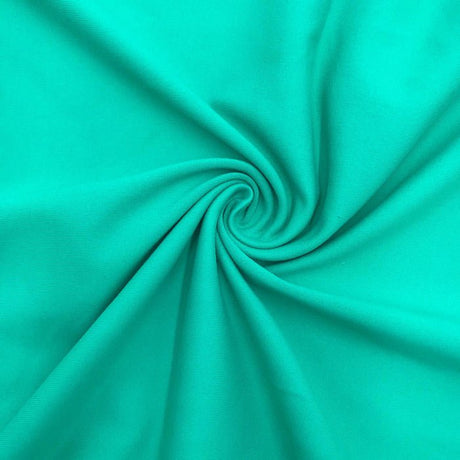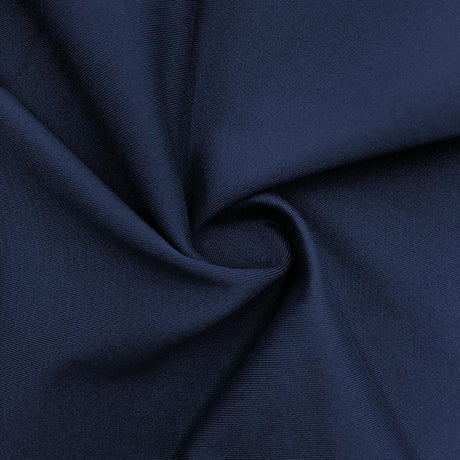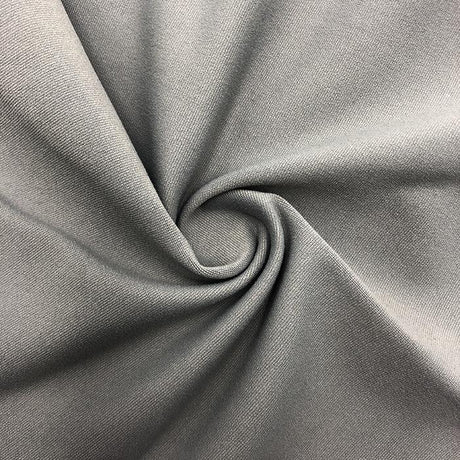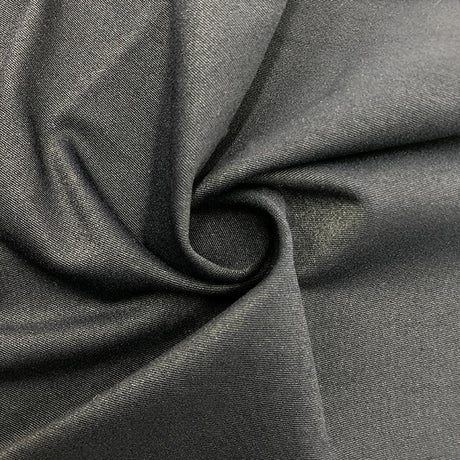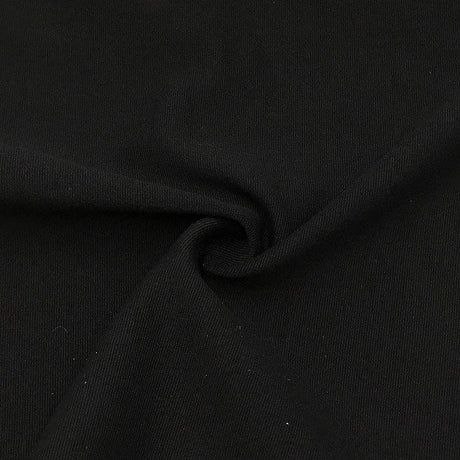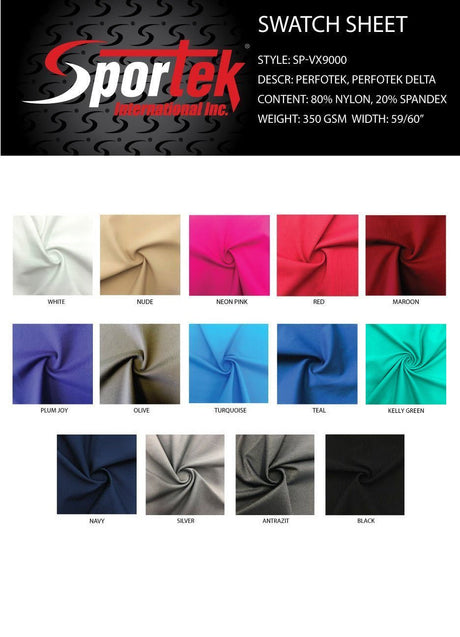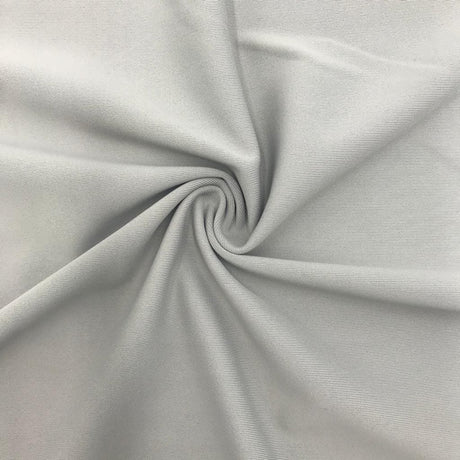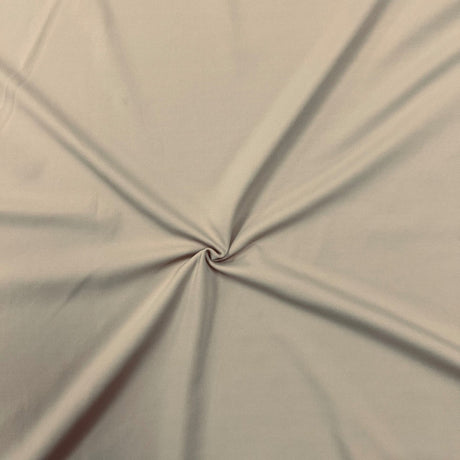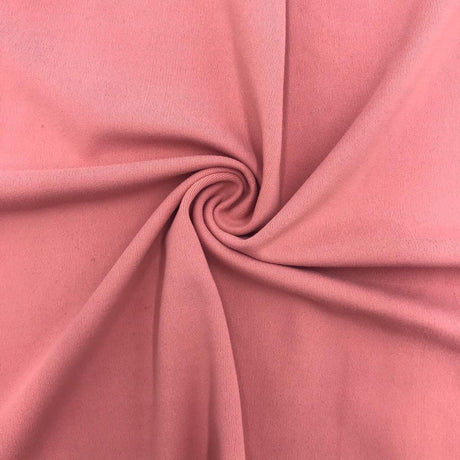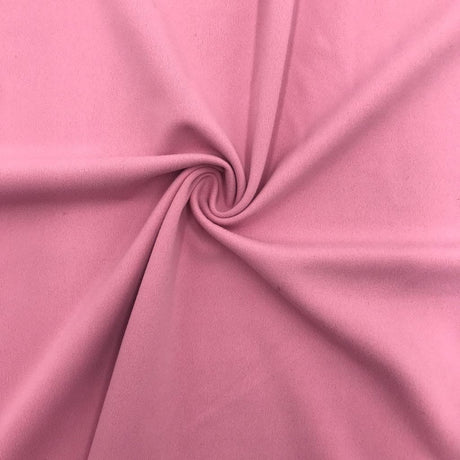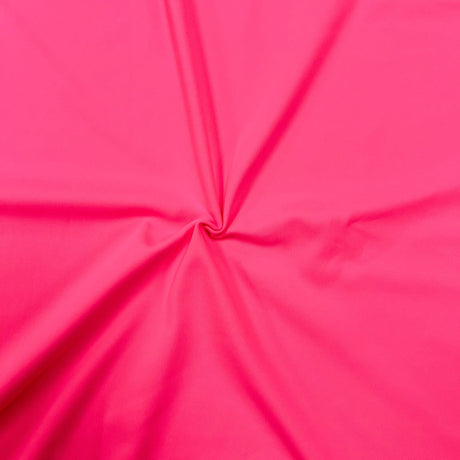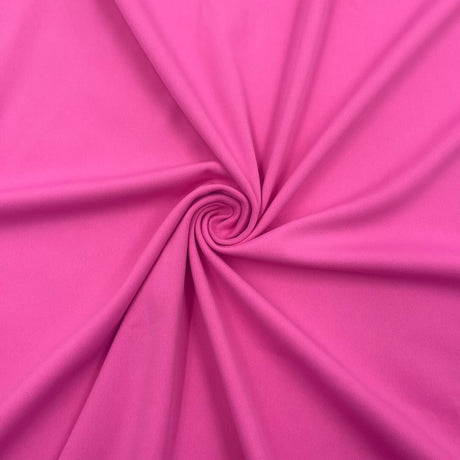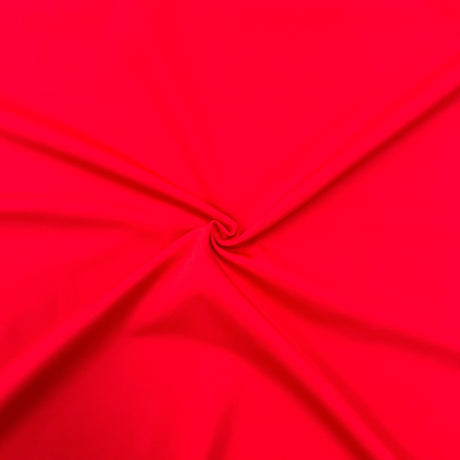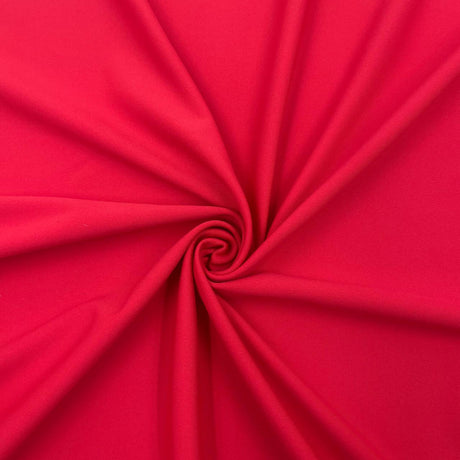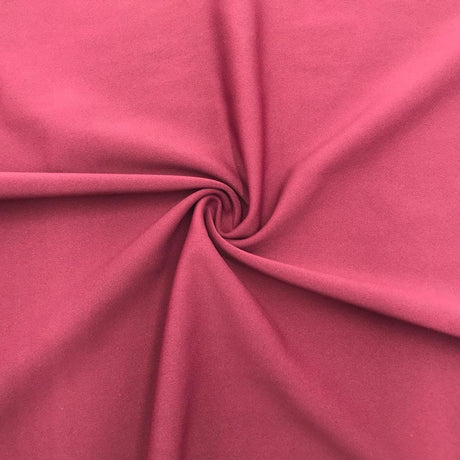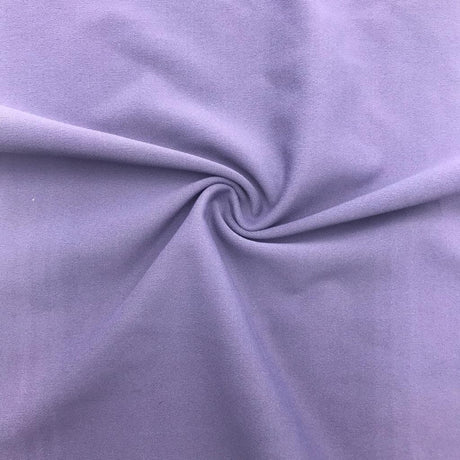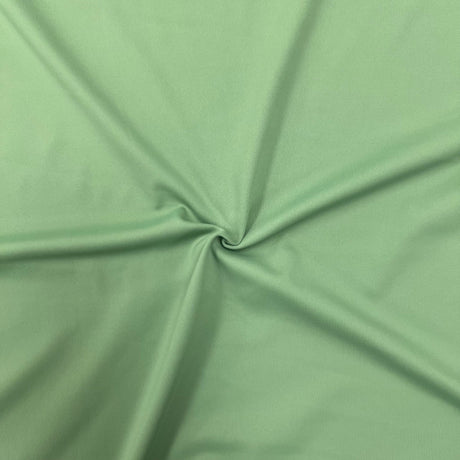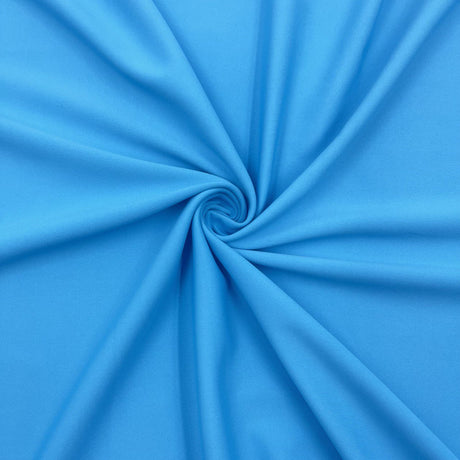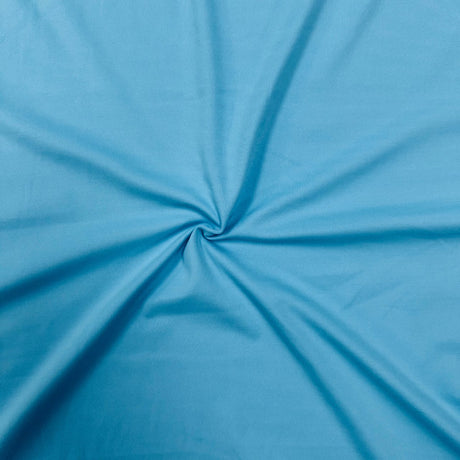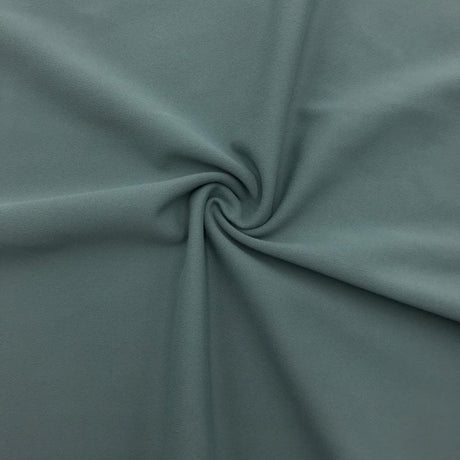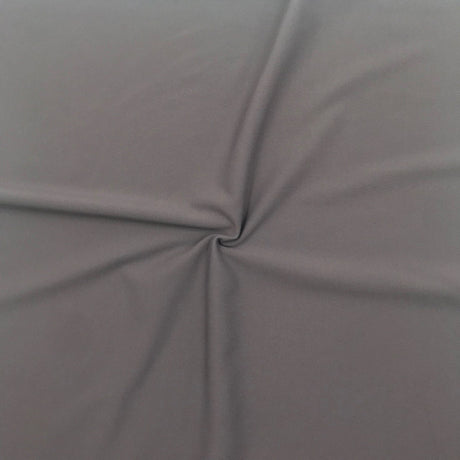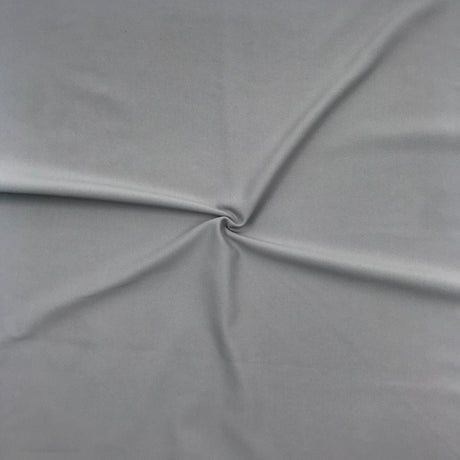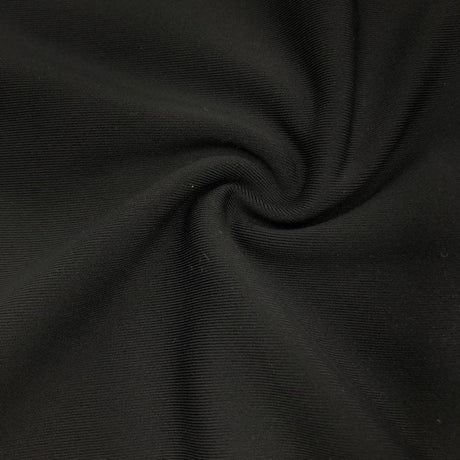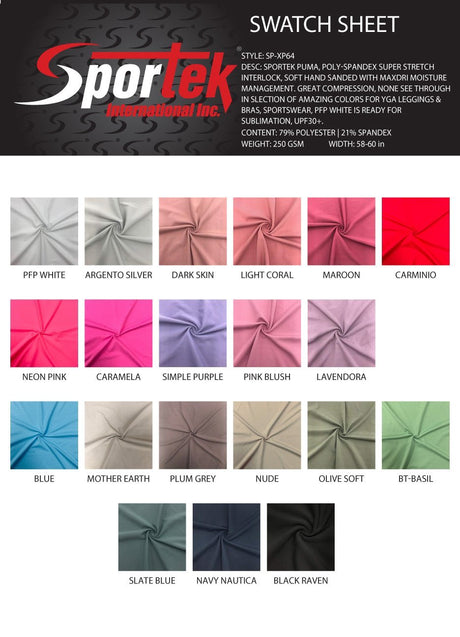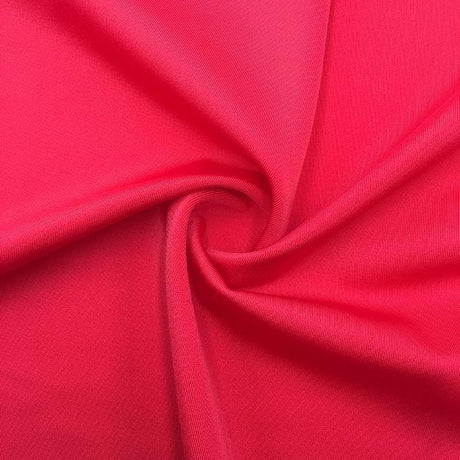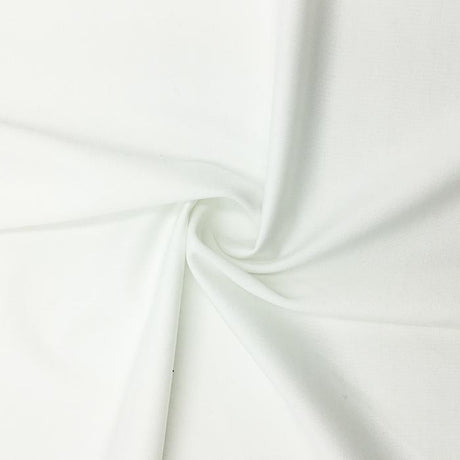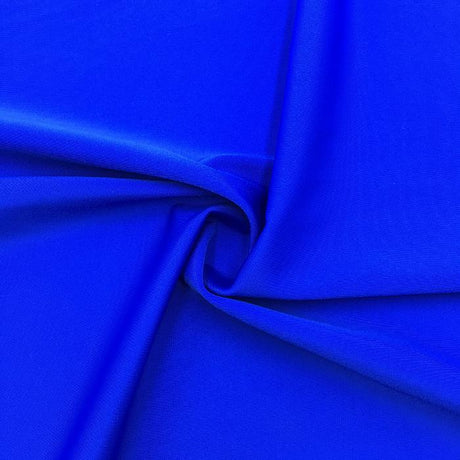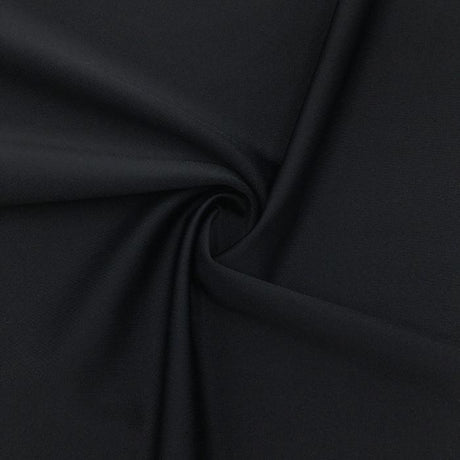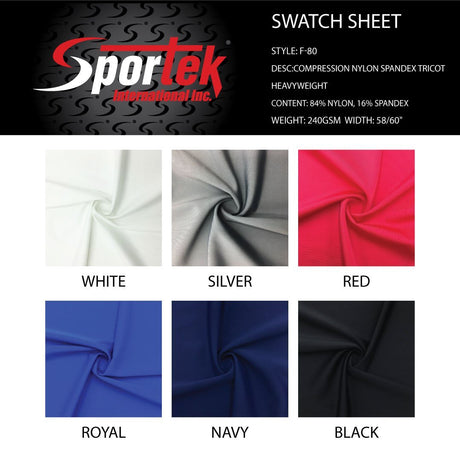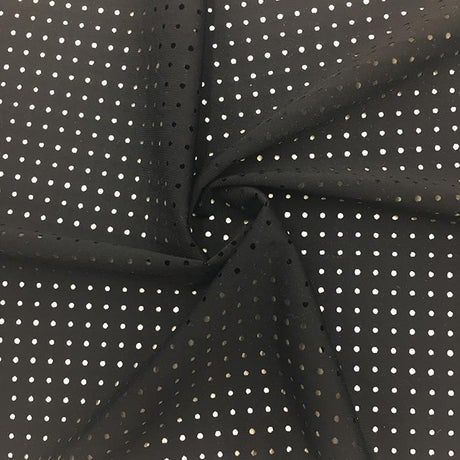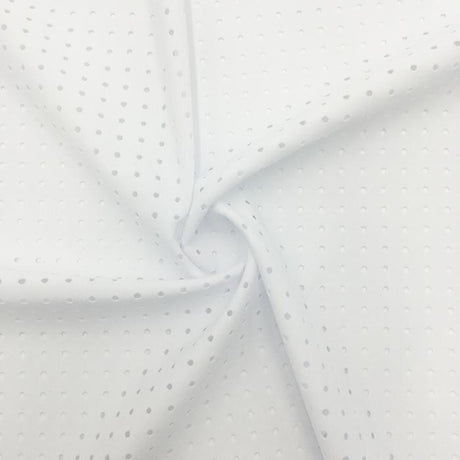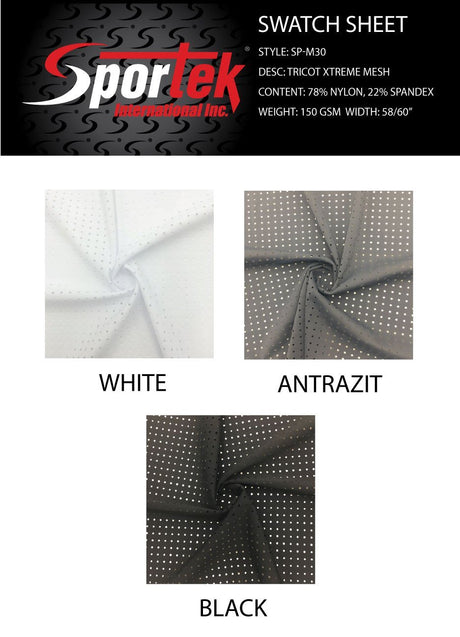Selecting the right fabric weight is crucial when designing stretch garments like leggings, swimwear, or dance costumes. Fabric weight is often measured in GSM (grams per square meter), which indicates how much one square meter of fabric weighs. In stretch fabrics (such as those with spandex/Lycra content), the GSM – sometimes informally called the spandex GSM – directly affects the garment’s feel, support, opacity, and performance. A higher GSM generally means a thicker, more opaque and supportive material, while a lower GSM yields a lighter, more breathable fabric. This article will explain what GSM is, why it matters for spandex-blend textiles, and how to choose an appropriate fabric weight for various stretch garments. We’ll cover how different GSM levels impact properties like stretch and durability, give recommended GSM ranges for applications from yoga pants to shapewear, and provide technical tips for testing GSM and sourcing fabrics.
What is GSM and Why It Matters for Stretch Fabrics
Definition of GSM: GSM stands for grams per square meter, a standard unit for fabric weight or density. It tells you how much a piece of fabric would weigh if you cut a one-meter by one-meter square. For example, a fabric at 200 GSM means one square meter weighs 200 grams. Manufacturers determine GSM by cutting a precise sample (often 10cm x 10cm or using a circular cutter) and weighing it, then scaling up to a full square meter. This standardized measure allows easy comparison of fabric heft across different materials.
Significance for stretch fabrics: In spandex-blend textiles (e.g. nylon-spandex or polyester-spandex knits), GSM is a key indicator of how the fabric will perform. Heavier spandex GSM fabrics tend to be thicker, more opaque, and more supportive, offering greater compression and hold. Lighter GSM fabrics are thinner, more translucent, and drape more fluidly, prioritizing flexibility and airiness over support. Understanding GSM is especially important for stretch garments because it influences not only weight but also how the fabric stretches and recovers. Two fabrics may both contain spandex, but if one is 300 GSM and another 150 GSM, they will feel and behave very differently.
How GSM is measured: Designers or buyers can measure GSM on their own to verify a fabric’s weight. Cut a small sample of known dimensions – commonly a 10 cm x 10 cm square – and weigh it in grams. Multiply the sample’s weight by the appropriate factor to scale up to a full square meter (for a 10×10 cm sample, multiply by 100). For example, if a 10×10 cm swatch weighs 2.5 grams, the fabric is 250 GSM (2.5g × 100). Industry professionals often use dedicated GSM cutters (which punch out a standard area) and gram scales for accuracy. This simple test ensures you know the spandex GSM of a material before committing to bulk yardage.
How GSM Affects Stretch Fabric Performance
Different GSM levels will significantly impact a stretch fabric’s properties. Below are key performance factors and how low vs high GSM influences them:
- Feel & Drape: Low-GSM fabrics feel lightweight and often have a soft, fluid drape. They tend to feel silky or barely-there against the skin. In contrast, higher GSM fabrics feel more substantial and structured. A heavy-weight spandex knit will be thicker and stiffer, with less fluid drape, but it provides a firm, supportive hand. Lightweight (e.g. 120 GSM) spandex might flutter or flow, whereas a heavy 300 GSM fabric holds its shape and hangs with a steadier, less clingy drape.
- Stretch & Support: All else equal, a heavier spandex fabric will offer stronger support and compression. High GSM fabrics have more material (and usually more fibers) per area, which means they resist stretching and “snap back” with more force, providing a supportive, hugged-in feel. This is ideal for compression leggings or shapewear where you want the garment to hold you in. Lighter GSM fabrics stretch more easily and feel less restrictive, but they also provide minimal support – suitable for flexibility and comfort rather than compression. (Do note that elastic fiber content also plays a role: a 250 GSM fabric with 20% spandex will be more compressive than a 250 GSM fabric with only 5% spandex, for example.)
- Opacity & Coverage: GSM is a major factor in whether a stretch fabric is opaque or see-through. Lower-weight fabrics are often semi-sheer when stretched; many lightweight knits (under ~150 GSM) can become transparent over curves or when pulled taut. Higher GSM fabrics are typically more opaque. For instance, quality squat-proof leggings are usually in the mid to high GSM range to prevent any transparency. If modesty is a concern (for leggings, swimwear, etc.), choosing a higher GSM or a double-knit/denser construction is crucial. Some garments compensate by using two layers of a lighter fabric (e.g. a separate lining) to achieve the needed coverage if a single-layer of lower GSM would be sheer.
- Breathability: Lightweight stretch fabrics generally allow more airflow and tend to be cooler to wear. With less material per area, there are often tiny gaps in the knit that permit ventilation. Heavyweight stretch fabrics (high GSM) can run warmer – they trap more heat since the knit is dense and there’s simply more fiber mass insulating the body. For hot weather activewear or dance costumes, a lower GSM can improve breathability, whereas high GSM spandex is better suited for cooler conditions or when warmth is desired.
- Durability: As a rule, a higher GSM fabric will be more durable and long-lasting, especially in activewear applications. With more fibers packed in, heavy fabrics resist wear and tear, abrasion, and repeated stretching better than flimsy lightweight fabrics. High-GSM textiles can withstand intense use (think of cycling shorts or wrestling singlets) without thinning out or bagging. Low-GSM fabrics, while comfortable, are more delicate – they can pill, snag, or lose elasticity faster under heavy use. If a garment will undergo frequent washing or high strain, a higher GSM ensures greater longevity.
- Moisture and Warmth: Although not as obvious as other factors, GSM also ties into how a fabric handles moisture and thermal properties. Heavier fabrics can absorb or hold slightly more moisture simply due to more material (though fiber type matters – e.g. nylon vs poly). They also provide a bit more warmth or insulation (useful for winter running tights or scuba-knit dancewear) since there is more bulk to trap air. Lighter fabrics dry quickly and feel cooler, which is advantageous for sweat-wicking summer workout gear.
In summary, understanding the spandex GSM of a fabric gives you a predictor of its behavior: low GSM for a lightweight, breathable, but less supportive garment; high GSM for a sturdy, opaque, supportive garment (at the cost of some breathability and drape). The challenge is choosing the right balance for your specific application.
GSM Categories for Spandex-Blended Fabrics
Stretch fabrics that include spandex (elastane) can be broadly categorized by weight class. Here’s a breakdown of GSM ranges and typical characteristics for spandex-heavy fabrics:
- Lightweight Spandex: Approx. 120–180 GSM. These fabrics are thin, highly breathable, and often have a very soft or silky hand. They prioritize stretch and comfort over coverage. Lightweight spandex blends may be slightly sheer, especially in light colors or when stretched, due to the lower fiber density. Uses: Best for sheer or layered applications – for example, stretchy linings, dancewear overlays, lightweight lingerie or hosiery, and base-layer tops. In these cases, a flowing drape and maximum flexibility are desired over firmness. (Many costume and dance fabrics for skirts or overlays fall in this category, as do some summer-weight activewear tops.)
- Mid-Weight Spandex: Approx. 180–250 GSM. This is the “sweet spot” for many stretch fabrics. Mid-weight spandex knits strike a balance between comfort and support: they are generally opaque, with a solid coverage, yet still reasonably breathable and flexible. They have a moderate drape – not too floppy, not too stiff. Uses: Ideal for everyday activewear and athleisure, such as yoga pants, standard leggings, sportswear tops, and sports bras. Mid-weight fabrics (around 200 GSM) are also common in casual dresses or skirts that need stretch. They provide enough thickness to be squat-proof and durable, but not so much as to feel bulky. Many designers consider roughly 180–220 GSM the optimal range for yoga leggings and similar garments.
- Heavyweight Spandex: Approx. 250–400+ GSM. These are substantial, thick stretch fabrics with high density. Heavyweight spandex textiles are very opaque and offer excellent compression and support. They tend to have a firm stretch (significant resistance) and strong recovery, snapping back into shape easily. Because of the fiber content and knit tightness, they are less breathable and can feel warm, but they shine in providing structure. Uses: Suited for high-performance and support garments – for example, compressive running or cycling tights, wrestling singlets, structured dancewear bodysuits, swimwear, and medical-grade compression garments. A heavy spandex GSM is also used in specialty uses like stretch upholstery or cosplay costumes that need a firm body. Fabrics at the extreme high end (300–400+ GSM) are usually reserved for medical or industrial applications, but 250–300 GSM is common in top-tier athletic and shapewear fabrics.
Keep in mind these ranges are guidelines, not hard rules. One fabric at 240 GSM might behave heavier or lighter than another at the same GSM due to differences in fiber type or knit structure. But as a general framework, you can use these categories to narrow down what spandex GSM range you should look for based on the garment type.
Recommended GSM Ranges by Garment Type
Different stretch garments benefit from different fabric weights. Below are recommended GSM ranges for various applications, along with reasoning:
- Leggings and Yoga Pants: For standard leggings or yoga pants, a mid-weight fabric (~180–250 GSM) is usually best. This range provides a good mix of opacity, stretch, and comfort. At ~180–200 GSM, you get that “second skin” feeling ideal for yoga – the pants will be lightweight and flexible for complex poses. Higher GSM towards 220–250 is common for “squat-proof” leggings meant for the gym, ensuring they aren’t see-through and have a bit more compression. In fact, some athletic brands recommend about 200–250 GSM for high-quality yoga leggings, as it makes the fabric “soft but also strong”. If you want a more structured legging (for example, jeggings or pants that mimic denim), you might even go 250+ GSM with a dense knit to get better coverage and shape-holding. Bottom line: Look for spandex GSM in the low-200s for most leggings; lighter if you prioritize comfort over coverage, heavier if you need maximum opacity and support.
- High-Impact Athletic Wear & Sports Bras: For running tights, compression shorts, high-intensity training wear, and sports bras, lean towards mid to heavyweight spandex fabrics. Typically 220–280 GSM is ideal for these garments. The higher weight provides the necessary muscle support and reduces bounce or vibration during exercise. For example, a sports bra or compression crop top around 250 GSM will feel substantial and secure, helping minimize stretch out and providing good coverage. Likewise, running leggings in the mid-200 GSM range offer a bit of compression to support muscles and won’t turn sheer when you’re in motion. These heavier activewear fabrics also tend to be more durable and often incorporate moisture-wicking fibers. If the activity is extremely high-impact or involves a lot of friction (say, trail running or obstacle course racing), pushing toward the upper 200s GSM can improve longevity and support. In summary: Serious athleticwear benefits from a spandex GSM on the higher end of the mid-weight category, balancing stretch with firmness.
- Swimwear (Swimsuits, Surf Wear): Stretch fabrics for swimwear are typically heavyweight for their category – usually in the 250–320 GSM range. A heavier spandex GSM is necessary for swimsuits to ensure opacity and shape retention, especially when the fabric is wet. Swimwear fabrics (often a nylon-spandex tricot knit) around 200–250 GSM are common for fashion swimwear, often paired with an inner lining layer. For competitive or high-end swimwear, weights can reach 280–300 GSM to provide compression and streamline the body in the water. The heavy weight combined with a tight knit prevents the suit from becoming transparent and saggy when stretched or saturated. Additionally, these fabrics are often engineered with chlorine-resistant fibers – for example, a nylon-spandex blend at 280 GSM will give strong support and withstand pool chlorine better than a lighter material. Always check that swim fabrics are within a high GSM range and have the appropriate fiber content (nylon or polyester with Xtra Life Lycra, etc.) to ensure durability.
- Shapewear and Compression Garments: Shapewear (like tummy control shorts, compression leggings for smoothing, etc.) demands a high GSM because it needs powerful stretch recovery and compression. Fabrics in the 200–300 GSM range are typically used for shapewear pieces. Often, these garments use a firm power net or interlock knit with a high elastane content. For example, a premium shapewear knit might be ~200 GSM with 30% spandex and very tight construction, or it could be double-layered power mesh of ~100 GSM each. Some heavy-duty shapewear materials go even thicker – essentially bordering on medical compression fabric (>300 GSM) for maximum sculpting. Generally, heavyweight spandex blends are ideal for shapewear, as they provide strong resistance to stretch (hence holding you in) and won’t easily become sheer even when significantly expanded. If comfort is a concern, some mid-weight fabrics around 180–200 GSM can be used in lighter shapewear, but they will have milder shaping effect. Serious compression garments (for athletic recovery or medical use) will push toward 300–400 GSM with specialized knit structures, though those are usually not everyday-wear. Tip: When sourcing shapewear fabric, focus on high GSM and ask about power stretch or compression ratings to ensure it meets the support level required.
- Undergarments and Lingerie: For everyday underwear, stretchy bras, or lingerie, the fabric weight is usually on the lighter side (around 100–180 GSM). Comfort and soft drape are the priorities here, so fabrics are chosen to be very pliable and breathable. For example, a seamless nylon-spandex panty might be ~120 GSM – enough for coverage, but very light for a barely-there feel. Similarly, many stretchy lace or mesh lingerie fabrics fall in the 80–150 GSM range. These low GSM materials have lower density and support, but that’s acceptable (even desirable) for undergarments where you don’t want bulk. They trade off durability – a 120 GSM sheer mesh will be more prone to runs – but the comfort is worth it. One can reinforce such light fabrics with linings or just accept a shorter lifespan for delicate pieces. Note: If the undergarment is meant for active or support use (e.g. a sports brief or a dance bodysuit), then a higher GSM (200+) would come into play. But for normal underwear and bras, lightweight stretch fabrics with a soft touch and around 120–150 GSM are common.
- Dancewear: Stretch dancewear spans a range of GSM depending on the style and function. Practice dancewear or leotards often use medium-weight fabrics (~180–220 GSM) to strike a balance between movement and durability. A leotard for ballet class, for instance, might use a 200 GSM nylon-spandex jersey – providing enough coverage and support for modesty, but still allowing full range of motion. On the other hand, performance dance costumes can vary widely: some use lightweight stretch fabrics for flowing skirts or draped costumes (e.g. a lyrical dance dress might be made of 120 GSM stretch mesh layers), while others require heavyweight spandex for a structured, athletic look (e.g. acrobatic or cheer dance bodysuits using 250–300 GSM for maximum compression and to keep everything in place during intense moves). Competitive dance and skating costumes often layer fabrics – for example, a base leotard of 200 GSM tricot, with decorative overlays of lighter fabrics. In summary, spandex GSM for dancewear can range from very light (if multiple layers or for special effects) to heavy (for unitards that need support); most everyday dance apparel falls in the mid-weight category for comfort and resilience.
- Costume and Performance Fabrics: Costumes (such as cosplay outfits, stage costumes, or superhero-style suits) can utilize any GSM that achieves the desired effect. This is one area where you truly must consider the design requirements. If a costume requires a sheer, ethereal look – say a translucent stretch mesh for a fantasy sleeve – you might use a low GSM around 50–100 for that portion. Conversely, if you’re making a form-fitting superhero suit or sci-fi costume that needs to look smooth and conceal the body underneath, you may opt for a heavy spandex 300 GSM or even add foam backing to beef it up. Many theatrical and cosplay costumes use medium-weight (180–250 GSM) spandex as a base, since it’s easier to sew and has good stretch, then build on structure via added layers or interfacing. The key is that costumes often layer materials: a medium-weight shiny stretch base might be combined with padded pieces or multiple layers of different fabrics to create the final look. So, while there is no single GSM for “costume fabric”, understanding spandex GSM helps you ask the right questions – e.g., do I need a heavier knit so it’s not see-through under stage lights, or can I use a lighter fabric but line it? – and guides how you construct the costume. Always consider the functional needs (stretch versus structure) and choose a GSM that meets those, potentially using several fabric weights in one outfit.
(For quick reference, see the table below summarizing typical GSM ranges for various garments and their characteristics.)
|
Garment Type |
Typical GSM Range |
Characteristics & Rationale |
|
Leggings (casual/yoga) |
180–220 GSM |
Light to mid-weight for “second skin” comfort, full flexibility, and sufficient opacity for stretching poses. Low 200s GSM offers a soft feel yet squat-proof coverage. |
|
Leggings (performance) |
220–280 GSM |
Mid-heavy weight for gym or running leggings that are opaque and provide mild compression. Ensures no show-through and higher durability under stress. |
|
Sports Bras & Compression Shorts |
220–300 GSM |
High spandex GSM to deliver firm support. Thick, strong fabric minimizes bounce and retains shape. Often in the 250+ GSM range for serious support garments. |
|
Swimwear (Swimsuits) |
250–320 GSM |
Heavyweight warp-knit (tricot) fabrics to maintain shape when wet. Very opaque and snug. Often used with lining; e.g. 200 GSM outer + 100 GSM lining ensures full coverage. |
|
Shapewear |
200–300 GSM |
Heavy, high-compression knits for body-shaping effect. Typically multi-layer or very dense material. Prioritizes support over comfort, with strong recovery. |
|
Everyday Undergarments |
100–180 GSM |
Lightweight for comfort and breathability. Thinner fabrics with soft stretch (e.g. jerseys, meshes). Not very supportive but smooth under clothing. |
|
Dancewear (Leotards) |
180–220 GSM |
Medium weight for balanced stretch and coverage. Allows freedom of movement while enduring frequent wear. Higher GSM for compression dance bodysuits, lower if layering with skirts. |
|
Costumes |
Varies: 150–300 GSM |
Chosen per design: can be lightweight for sheer or layered costumes, or heavy for structured suits. Often layers of different GSM fabrics are combined to achieve the desired look and functionality. |
Testing and Comparing Fabric GSM in Practice
When you receive fabric samples or are evaluating materials, it’s wise to test the GSM yourself. As mentioned earlier, the process is straightforward:
- Cut a sample – Use a small piece with a known area. A 10 cm x 10 cm square is a convenient choice (approximately 4" x 4"). This size is exactly 1/100th of a square meter, which simplifies calculations. For accuracy, cut cleanly (a rotary cutter on a cutting mat helps) so the piece is precise.
- Weigh the sample – Place it on a gram scale. Ensure the scale is tared (zeroed) and sensitive enough for a few grams. Record the weight. For example, say your swatch weighs 3 grams.
- Calculate GSM – Multiply the sample’s weight by the factor to scale up to one square meter. With a 10×10 cm (0.01 m²) sample, multiply by 100. In our example, 3 g × 100 = 300 GSM. If you used a different sample size, adjust accordingly (e.g. if using a 5 cm x 5 cm piece, that’s 1/400th of a m², so you’d multiply weight by 400).
- Compare to specs – Now you can compare this measured GSM to the supplier’s specs or to other fabrics. If a supplier claimed 280 GSM and your test shows 220 GSM, that’s a red flag (perhaps the sample was different or the label inaccurate). Sometimes finishes or moisture can skew weight, so ensure the sample is dry and free of heavy finishes when weighing.
Technical tip: If you don’t have a precise scale handy, you can estimate GSM by comparing fabrics of known weight. For instance, if you know one fabric is 200 GSM and the new sample feels significantly lighter and more translucent, it likely has a lower GSM. However, this is subjective; using a scale is the professional approach for accuracy. There are also pre-made GSM cutters (circular cutters) that cut out a standard area (often 100 cm²) and are used in textile labs along with precision scales – useful if you are frequently testing fabrics.
By testing GSM yourself, you can directly compare different materials. Lay out your swatches and note their GSMs side by side. You might find, for example, that Fabric A is 150 GSM and very drapey, while Fabric B is 250 GSM and much firmer. This hands-on comparison helps in deciding which fabric is more suitable for your project. Also, remember that GSM is one factor – you should also stretch-test the swatches (does it stretch far enough? too much?), feel the thickness, and check opacity by holding them up to light or over a dark surface. GSM will give you a baseline, but the fabric’s knit structure and fiber type also affect performance in those tests.
Fiber Content, Knit Structure, and Layering Considerations
While GSM is a crucial metric, fiber content and knit construction also play big roles in how a stretch fabric behaves. Two fabrics with the same spandex GSM can feel quite different if one is a nylon blend interlock knit and the other is a polyester jersey, for example. Here are some additional factors to consider:
- Fiber Content (Nylon vs. Polyester Spandex): Most technical stretch fabrics are blends of spandex (for stretch) with either nylon (polyamide) or polyester (PET). At an equivalent GSM, nylon-spandex fabrics tend to feel a bit smoother and sometimes “lighter” in drape, even if they are very strong. Nylon is generally softer and more durable in terms of abrasion resistance, and it has a natural moisture-wicking ability. Polyester-spandex fabrics, on the other hand, are typically slightly stiffer to the touch and can run warmer (poly doesn’t breathe as well), but they have advantages like better chlorine resistance, UV resistance, and often a lower cost. In terms of GSM, there isn’t a huge difference – you can find both nylon and poly spandex knits across all weights. However, nylon fibers are a bit less dense (lighter) than polyester fibers, which means a nylon-spandex fabric might achieve the same opacity at a slightly lower GSM compared to a polyester-spandex fabric. For example, a 230 GSM nylon-spandex tricot swim fabric could feel just as thick/opaque as a 250 GSM poly-spandex, partially because nylon yarns can be strong yet fine. Fiber choice also affects feel: a 200 GSM nylon/spandex legging fabric will likely feel more buttery and cotton-like, whereas a 200 GSM poly/spandex might feel more slick or shiny. When choosing fabric weight, consider fiber too – if you need a very soft hand and high stretch, a nylon-based fabric in the mid-GSM range might outperform a polyester one of higher GSM. Conversely, for something like team sports uniforms that see sun and chlorine, a polyester-spandex at a given GSM might last longer color-wise. Always weigh (pun intended) GSM along with fiber properties for the application.
- Knit Style (Jersey, Interlock, Tricot): The knit construction impacts how the GSM translates to performance. Single jersey knit is common in stretch fabrics – it’s a single-layer knit that tends to be lightweight and has significant stretch. A jersey with spandex might weigh, say, 150 GSM and be quite thin and flexible. Interlock knit is essentially two jerseys knitted together; it makes a double-faced, thicker fabric. An interlock of the same fiber content could easily be 200 GSM or more and feel much more stable and opaque than a jersey at the same weight. For instance, a 180 GSM interlock might have the coverage similar to a 220 GSM single jersey because interlock is inherently more dense and has less mechanical stretch. Tricot knit is a warp-knit often used in swimwear and lingerie; it has a distinct vertical rib on one side and is known for a smooth, somewhat lustrous face. Tricot can be very thin or quite thick, but it generally has limited stretch in one direction unless high spandex is used. Many swimwear fabrics are tricot around 180–220 GSM – they feel medium-weight and very strong for their weight, providing good coverage with a smooth finish. Heavier tricots (250+ GSM) are used for competition swimwear or compression wear, where a very firm stretch is needed (sometimes these are even double-knit tricot or engineered interlocks around 280 GSM for high compression suits). Mesh vs. Solid: Note that some fabrics are mesh or lace (with intentional holes); their GSM might be lower but due to design, not lack of quality. For example, a power mesh for shapewear might only be 100 GSM but is often layered to achieve the needed strength. The key point is: when comparing GSM, also consider the knit type – a fabric’s structure (how tightly it’s knitted or whether it’s double-layered) can enhance its support and opacity without solely relying on weight.
- Layering and Lining: In stretch garments, layering is a technique to get the desired effect without a single fabric doing all the work. For example, a swimsuit might use a shell fabric of 200 GSM and a lining of 100 GSM, effectively giving the wearer ~300 GSM of combined coverage in critical areas. Similarly, dance costumes might layer a glittery but lightweight stretch fabric over a sturdier base. When you layer fabrics, the effective GSM (in terms of what the wearer feels or how opaque it looks) is higher than each layer alone. This means you could use two lighter layers to approximate the function of one heavier layer. There are pros and cons: two layers can increase warmth and reduce stretch slightly (because the layers slide against each other), but they can also increase comfort (a soft liner behind a stiffer outer fabric feels nicer on skin). In shapewear, it’s common to see two layers of mid-weight powernet instead of one extra-heavy layer – this can distribute pressure more evenly. When choosing fabrics, ask yourself if the garment will be single-layer or lined. If single-layer, you might lean toward a higher GSM to ensure coverage. If lined or doubled, you might get away with slightly lighter materials for better movement, since combined they’ll function as a heavier fabric. Be cautious with layering different GSM fabrics – the stretch properties should be compatible (a super stretchy light layer might get restricted by a heavy low-stretch layer). Always test layered swatches together.
Sourcing Fabrics by GSM: Questions to Ask and Avoiding Pitfalls
When sourcing stretch fabrics, being armed with GSM knowledge helps you ask the right questions to suppliers and avoid common pitfalls. Here are practical tips:
- Confirm the Numbers: Always verify the GSM with the supplier, and ask how it was measured. Sometimes, especially with overseas mills, the term “GSM” might be used loosely or converted from other units. For example, some suppliers might list fabric weight in ounces per square yard (oz/yd²) instead – 6 oz/yd² roughly equals 203 GSM. Make sure you’re speaking the same language. If a fabric is listed as, say, “8 oz”, clarify if that means per square yard (which would be ~271 GSM) and not per linear yard. When in doubt, get the GSM in writing.
- Ask for Swatches: Never rely solely on a GSM number to judge a fabric’s quality. Request swatches or sample cards whenever possible. This allows you to feel the thickness, stretch, and finish. Two fabrics both labeled 250 GSM can feel very different (one might be stiff and paper-like, another soft and elastic). As one guide suggests, pay attention to detailed fabric descriptions and consider ordering swatches to get a true feel before buying larger quantities. A reputable supplier will understand these requests; if they can’t provide a swatch, try to get more details like knit type, spandex percentage, and even a close-up photo.
- Inquire About Composition and Finishes: GSM is just one part – ask about the fiber blend (nylon vs polyester content) and percentage of spandex (elastic). A 300 GSM fabric that’s 5% spandex and 95% cotton will behave differently from a 300 GSM fabric that’s 25% spandex and 75% nylon. Also ask if there are any coatings or finishes (e.g. a PU coating can add weight and change hand feel). Some fabrics are brushed (which increases GSM slightly by raising fiber fluff) or have moisture-wicking finishes (which usually don’t affect weight much, but good to know). If a supplier advertises a high spandex GSM for a very cheap price, check that it’s not due to some filler or backing that adds weight but not performance.
- Watch for Misleading Labels: Unfortunately, not all listings are accurate. Sometimes the GSM is exaggerated to make a fabric seem higher quality, or it might be a typo (e.g. “280 GSM” when it’s actually 180 GSM). Cross-check by looking at the typical use: if someone claims a mesh is 300 GSM, that’s suspicious because meshes are usually lighter. If an leggings fabric is labeled as 400 GSM, consider that most leggings top out around 300; 400 GSM might indicate a very thick neoprene-like knit or just be incorrect. Use context clues and compare to known standards (the ranges we discussed above can serve as a reference). If possible, measure the swatch yourself on a scale when it arrives to confirm it matches the spec.
- Discuss Tolerances: Manufacturing can have slight variations. A fabric advertised at 200 GSM might actually be 190 or 210 in a given batch. Ask suppliers what their tolerance is (often ±5% is normal in textiles). If you’re right on the edge (say you need at least 250 GSM for squat-proof leggings), you might want a spec of 260 GSM to be safe, in case of minor variation. Also, darker colors sometimes end up marginally heavier due to dye absorption – it’s minor, but if you’re ordering both white and black fabric, the black might come in a few grams heavier (and conversely the white may feel a bit thinner even at same GSM).
- Opacity and GSM in Sourcing: If possible, ask the supplier for an opacity or stretch test description. Higher GSM usually means better coverage, but knit density matters too. Some suppliers provide photos of a stretched fabric over a contrasting background – study those if available. If not, when you get a swatch, do your own stretch and light test to ensure the GSM translates to the opacity you need. It’s easier to adjust before you buy rolls of fabric!
- Sample Garment Test: If you can, make a prototype garment with the sample fabric (or at least a portion of it). Sometimes a fabric that seems heavy enough in a small swatch still behaves differently when made into a full garment – e.g. leggings might slip if the fabric lacks friction despite GSM, or a heavy fabric might be too stiff for small pattern pieces. This kind of testing goes beyond GSM, but it’s part of sourcing smartly. It can reveal if a supposedly high GSM fabric actually performs like a cheaper, lighter one in practice (which could mean the weight comes from a less useful aspect like a coating that might wash out, etc.).
In summary, treat GSM as an important spec when sourcing – much like thread count in sheets or gauge in knits – but always pair it with due diligence: feel the fabric, check the content, and verify claims. By asking the right questions (What’s the GSM? Fiber makeup? Knit type? Can I get a sample?), you’ll avoid surprises. Suppliers who know their market expect these questions, especially from professionals. It ultimately saves time and money to ensure the “spandex GSM” and fabric quality truly meet your needs before you commit to a large order.
Conclusion
Choosing the correct fabric weight (GSM) for stretch garments is a critical decision that affects the comfort, appearance, and performance of the final product. By understanding GSM and how it relates to factors like stretch, support, opacity, and drape, textile professionals and apparel designers can make informed choices. Remember that higher spandex GSM fabrics provide more support, coverage, and durability, whereas lower GSM fabrics offer lightness, flexibility, and a flowing drape. There is no one-size-fits-all answer – a yoga teacher’s leggings will have different GSM needs than a competitive swimmer’s racing suit or a ballet dancer’s costume.
Use the recommended ranges as a starting point, but also consider fiber content (nylon vs polyester blends), knit construction (jersey, interlock, tricot), and whether you can use layering or linings to achieve the desired effect. Always test and feel the fabrics when possible, and don’t hesitate to ask suppliers detailed questions about their materials. With a professional, technical approach to fabric selection, you can ensure the stretch garments you create have the right balance of stretch, support, breathability, and durability for their intended purpose. Armed with knowledge about spandex GSM and its implications, you’re well-equipped to choose fabrics that will lead to high-quality, high-performance stretch garments that meet both your design vision and functional requirements.


